
Crypto: How the Code Rebels Beat the Government Saving Privacy in the Digital Age
by
Steven Levy
Published 15 Jan 2002
Not long afterward, Bidzos had his lawyer put Zimmermann on legal notice that he was infringing on PKP’s patents. This worried Zimmermann, and he called Bidzos once again to try to make a deal. The basis of the agreement was simple: Zimmermann would not distribute his software with the RSA protocols, and Bidzos would not sue him. An agreement was indeed drawn up to that effect, and Zimmermann signed it. But each party had his own interpretation of that phone conversation. Bidzos felt that the deal compelled Zimmermann actually to kill PGP. Zimmermann insisted that he had only affirmed his understanding of a hypothetical agreement: if he stopped distribution of PGP, then he would not be sued.
…
Zimmermann insisted that he had only affirmed his understanding of a hypothetical agreement: if he stopped distribution of PGP, then he would not be sued. Zimmermann would also claim Bidzos gave him verbal assurances that RSA would sell licenses to PGP’s end-users so they could use the software without infringing on RSA’s patents. Bidzos denied those claims. It later became clear that Zimmermann’s interpretation of “distributing PGP” was somewhat narrow. By leaving the distribution to others, he felt that he was free to continue his involvement with the software. In fact, Zimmermann was supervising a second release of PGP, this one with the help of some more experienced cryptographers.
…
When confronted with the charges from law enforcement agencies that PGP was particularly useful to criminals—in one Sacramento case, the cops couldn’t read a pedophile’s diary encrypted with Zimmermann’s software—he argued that all technology has trade-offs. Perhaps the highlight of Zimmermann’s odd celebrity came one day in San Francisco when some businesspeople decided to take him for an evening on the town that wound up at a North Beach strip club. The young lady lap dancing in proximity to Zimmermann asked casually what he did. “I’m a cryptographer,” he said. “I wrote a program called PGP.” The lap dance stopped in midgyration. “You’re Phil Zimmermann?” she asked in awe. “I know all about PGP!” True, cypherpunk sex workers were not everyday occurrences. But PGP’s audience was beginning to extend beyond techies and privacy nuts.
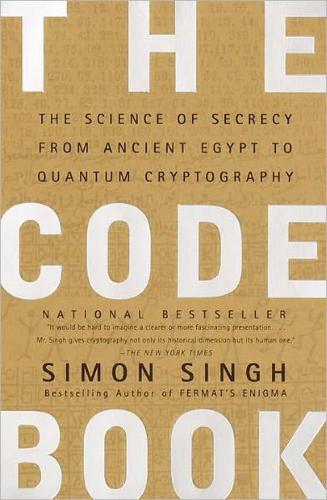
The Code Book: The Science of Secrecy From Ancient Egypt to Quantum Cryptography
by
Simon Singh
Published 1 Jan 1999
Nothing in PGP was original-Diffie and Hellman had already thought of digital signatures and other cryptographers had used a combination of symmetric and asymmetric ciphers to speed up encryption-but Zimmermann was the first to put everything together in one easy-to-use encryption product, which was efficient enough to run on a moderately sized personal computer. By the summer of 1991, Zimmermann was well on the way to turning PGP into a polished product. Only two problems remained, neither of them technical. A long-term problem had been the fact that RSA, which is at the heart of PGP, is a patented product, and patent law required Zimmermann to obtain a license from RSA Data Security, Inc. before he launched PGP. However, Zimmermann decided to put this problem to one side. PGP was intended not as a product for businesses, but rather as something for the individual. He felt that he would not be competing directly with RSA Data Security, Inc., and hoped that the company would give him a free license in due course.
…
RSA Data Security, Inc. decided not to give Zimmermann a free license, and was enraged that its patent was being infringed. Although Zimmermann released PGP as freeware (free software), it contained the RSA system of public key cryptography, and consequently RSA Data Security, Inc. labeled PGP as “banditware.” Zimmermann had given something away which belonged to somebody else. The patent wrangle would continue for several years, during which time Zimmermann encountered an even greater problem. In February 1993, two government investigators paid Zimmermann a visit. After their initial enquiries about patent infringement, they began to ask questions about the more serious accusation of illegally exporting a weapon.
…
Government included encryption software within its definition of munitions, along with missiles, mortars and machine guns, PGP could not be exported without a license from the State Department. In other words, Zimmermann was accused of being an arms dealer because he had exported PGP via the Internet. Over the next three years Zimmermann became the subject of a grand jury investigation and found himself pursued by the FBI. Encryption for the Masses … Or Not? The investigation into Phil Zimmermann and PGP ignited a debate about the positive and negative effects of encryption in the Information Age. The spread of PGP galvanized cryptographers, politicians, civil libertarians and law enforcers into thinking about the implications of widespread encryption.
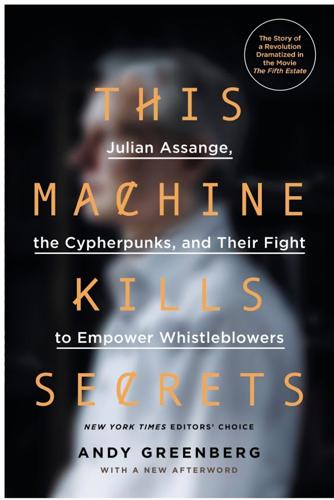
This Machine Kills Secrets: Julian Assange, the Cypherpunks, and Their Fight to Empower Whistleblowers
by
Andy Greenberg
Published 12 Sep 2012
“When they got that one, I can imagine the blood draining from their faces,” Zimmermann says gleefully. The State Department had figured out Karn’s game by this point, and denied his floppy disk request. He appealed and was denied again. So Karn sued them in a federal court. While that lawsuit was under way, Zimmermann ran into an editor at MIT Press while attending a privacy conference. The editor wanted to publish the PGP user’s manual that Zimmermann had included with PGP 1.0. Zimmermann was willing, but he asked for a favor. “I’d like you to also publish the source code to PGP,” Zimmermann said. “All of it.” The code added up to close to eight hundred pages, and MIT printed it in a font that was designed to be easily readable for scanning software, so that it could be converted from ink to bits with minimal effort.
…
So with only silence from the U.S. government, MIT Press went ahead and shipped the book to European bookstores along with all its other textbooks. PGP had been exported right under the government’s nose. It’s doubtful many Europeans ever scanned that book to implement its code. PGP was already being used across the world, after all. But now Zimmermann’s legal team could wield that bound chunk of paper—the one, today long out of print, sitting on Zimmermann’s shelf—as a logic bomb planted under the feet of Zimmermann’s prosecutors that they would detonate as soon as he was indicted. In the end, the Justice Department dropped its investigation into PGP, with no explanation. Zimmermann never found out whether it was his public support, Karn’s export trick, or simply a lack of political will behind his prosecution that saved him.
…
Within a month, the U.S. government would test the cypherpunks’ resolve. As Zimmermann polishes off his noodles, I pull a tome off the shelf in his dining room, the one that changed the course of his life fifteen years earlier: PGP: Source Code and Internals. As the title suggests, it’s literally a printed copy of PGP’s code, hardly legible to humans, not to mention the nongeek members of a jury deciding Zimmermann’s fate. But as Zimmermann explains, it wasn’t any argument or fact written in that volume, but rather the book’s mere existence—the fact that PGP’s source code was represented in ink on slices of pulped tree between two sheets of cardboard—that made it a crucial weapon in the Crypto Wars.
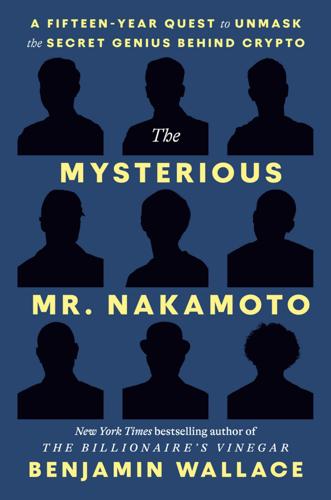
The Mysterious Mr. Nakamoto: A Fifteen-Year Quest to Unmask the Secret Genius Behind Crypto
by
Benjamin Wallace
Published 18 Mar 2025
In his early twenties, wanting to encrypt the files on his hard drive, he taught himself cryptography and wrote and released a piece of software called CryptDisk. This brought him to the attention of Phil Zimmermann, who just then was busy worrying about being prosecuted by the government and overseeing a small circle of volunteers working to expand PGP. While Hal was working on PGP 2.0, Phil wanted Will to code PGP Phone, software to enable encrypted calls over the internet. Will was speaking with Phil on January 11, 1996, when Phil put him on hold to take another call. When Phil clicked back over, he said: “Will, they’re dropping the investigation. It’s over.” After that, PGP entered a new phase, incorporating as a company and seeking venture capital.
…
Bell later spent years in federal prison, first for tax evasion and then for stalking and harassing IRS agents. PGP’s Phil Zimmermann, a gentle man facing the threat of criminal prosecution, had worn a suit every day for the past three years to present a respectable image in the court of public opinion. He was shocked when, at a cypherpunks meeting hosted by PGP, a member who went by the name Lucky Green reached into his duffel bag, announced that “the Cypherpunks Gun Club is going shooting next Saturday, and you’re all invited,” and proceeded to pull out an AR-15 assault rifle with an ammo clip. “PGP’s offices were in a bank building,” Phil recalled. Some cypherpunks were dogmatic, and a certain amount of their activity tended toward windy quarrels that irritated professional cryptographers and working programmers and hackers.
…
GO TO NOTE REFERENCE IN TEXT a month before Nakamoto made his last post there: Satoshi Nakamoto, “Added some DoS limits, removed safe mode (0.3.19),” BF, December 12, 2010. GO TO NOTE REFERENCE IN TEXT After his death, former colleagues: Phil Zimmermann, Gene Hoffman, and Jon Callas, interviews. GO TO NOTE REFERENCE IN TEXT “web of trust”: Philip Zimmermann, “PGP Marks 30th Anniversary,” Phil Zimmermann website, June 6, 2021. GO TO NOTE REFERENCE IN TEXT Emin Gün Sirer: Charlie Shrem, “Satoshi’s Identity in the Bitcoin Code? Ava Labs’ Emin Gun Sirer on Bugs, Forks, and Dapps,” The Charlie Shrem Show (podcast), May 5, 2020.
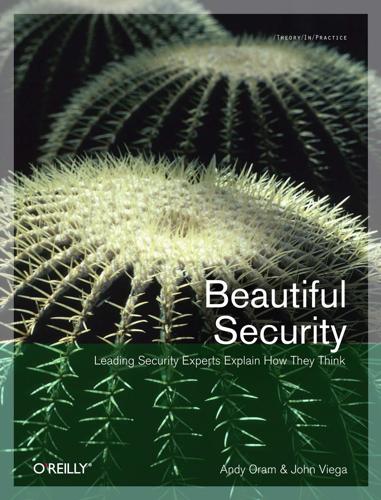
Beautiful security
by
Andy Oram
and
John Viega
Published 15 Dec 2009
P HILIP Z IMMERMANN is the creator of Pretty Good Privacy (PGP), an email encryption software package. Despite the lack of funding, the lack of any paid staff, the lack of a company to stand behind it, and the opprobrium of government persecution, PGP nonetheless became the most widely used email encryption software in the world. After the government dropped its case in early 1996, Zimmermann founded PGP, Inc. That company was acquired by Network Associates, Inc. (NAI) in December 1997, where he stayed on for three years as Senior Fellow. In August 2002, PGP was acquired from NAI by a new company called PGP Corporation, where Zimmermann now serves as special advisor and consultant.
…
SECURING ONLINE ADVERTISING: RUSTLERS AND SHERIFFS IN THE NEW WILD WEST 105 CHAPTER SEVEN The Evolution of PGP’s Web of Trust Phil Zimmermann Jon Callas W HEN P RETTY G OOD P RIVACY (PGP) FIRST ARRIVED IN 1991, it was the first time ordinary people could use strong encryption that was previously available only to major governments. PGP led to new opportunities for human rights organizations and other users concerned with privacy around the world, along with some oft-misunderstood legal issues that we’ll touch on later. One of the most influential aspects of PGP is its solution to the problem of connecting people who have never met and therefore never had a chance to exchange secure keys.
…
Summary 64 66 71 72 BEAUTIFUL TRADE: RETHINKING E-COMMERCE SECURITY by Ed Bellis 73 Deconstructing Commerce Weak Amelioration Attempts E-Commerce Redone: A New Security Model The New Model 74 76 83 86 SECURING ONLINE ADVERTISING: RUSTLERS AND SHERIFFS IN THE NEW WILD WEST by Benjamin Edelman 89 Attacks on Users Advertisers As Victims 89 98 vii 7 8 9 10 11 12 viii Creating Accountability in Online Advertising 105 THE EVOLUTION OF PGP’S WEB OF TRUST by Phil Zimmermann and Jon Callas 107 PGP and OpenPGP Trust, Validity, and Authority PGP and Crypto History Enhancements to the Original Web of Trust Model Interesting Areas for Further Research References 108 108 116 120 128 129 OPEN SOURCE HONEYCLIENT: PROACTIVE DETECTION OF CLIENT-SIDE EXPLOITS by Kathy Wang 131 Enter Honeyclients Introducing the World’s First Open Source Honeyclient Second-Generation Honeyclients Honeyclient Operational Results Analysis of Exploits Limitations of the Current Honeyclient Implementation Related Work The Future of Honeyclients 133 133 135 139 141 143 144 146 TOMORROW’S SECURITY COGS AND LEVERS by Mark Curphey 147 Cloud Computing and Web Services: The Single Machine Is Here Connecting People, Process, and Technology: The Potential for Business Process Management Social Networking: When People Start Communicating, Big Things Change Information Security Economics: Supercrunching and the New Rules of the Grid Platforms of the Long-Tail Variety: Why the Future Will Be Different for Us All Conclusion Acknowledgments 150 154 158 162 165 168 169 SECURITY BY DESIGN by John McManus 171 Metrics with No Meaning Time to Market or Time to Quality?
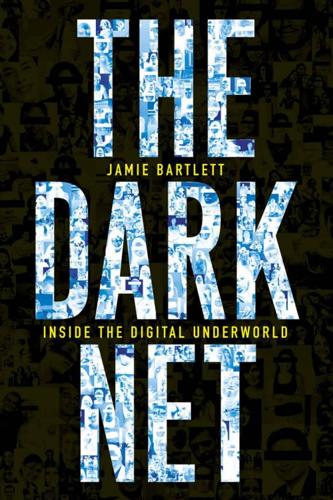
The Dark Net
by
Jamie Bartlett
Published 20 Aug 2014
For the cypherpunks, the fact that criminals use encryption is an unfortunate outcome, but a cost worth paying for the extra freedom it provides. Zimmermann has been asked repeatedly how he feels that the 9/11 hijackers might have used software he designed. It was, he says, far outweighed by the fact PGP is ‘a tool for human rights around the world . . . strong crypto does more good for a democratic society than harm.’ Zimmermann or Tim May don’t have responsibility for keeping the public safe, and don’t read top-secret security briefings. Omand did. Not that he blames Zimmermann – ‘it is not a moral consideration for him to weigh up. Of course he should have developed PGP. We would not have the benefits of the internet without such breakthroughs.
…
On learning of Biden’s S.266 clause, he feverishly set out to complete the project, almost losing his house in the process. When Zimmermann finished his software in 1991, he published it all online – on a Usenet group, of course – free for anyone who wanted to use it. He called it ‘Pretty Good Privacy’, or PGP for short, and within weeks it had been downloaded and shared by thousands of people around the world. ‘Before PGP, there was no way for two ordinary people to communicate over long distances without the risk of interception,’ said Zimmermann in a later interview. ‘Not by phone, not by FedEx, not by fax.’ It remains the most widely used form of email encryption to this day.
…
The US government, needless to say, wasn’t happy. They believed too many people using strong cryptography like PGP would make life a lot harder for the security services. The British government was also watching nervously. Sir David Omand, who was working for the British intelligence agency GCHQ at this time, recalls the period well. ‘We were very worried about the spread and adoption of powerful encryption like PGP.’ The British government even briefly considered following France in legislating to control encryption. In the end, they decided against: once Zimmermann had released the source code online, it was going to be almost impossible to try to remove it from the public domain.
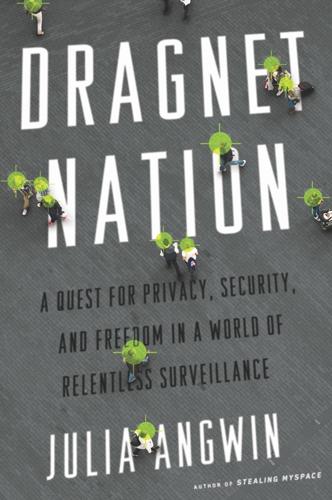
Dragnet Nation: A Quest for Privacy, Security, and Freedom in a World of Relentless Surveillance
by
Julia Angwin
Published 25 Feb 2014
It turned out he was: Evan Schoenberg, in discussion with author, November 25, 2012. When the antinuclear activist Phil Zimmermann: Phil Zimmermann, “Creator of PGP and Zfone: Background,” Philzimmermann.com (personal blog), http://www.philzimmermann.com/EN/background/index.html. The software I was using: “The GNU Privacy Guard,” GnuPG, http://gnupg.org/. On March 9, 1993, Eric Hughes published: Eric Hughes, “A Cypherpunk’s Manifesto,” March 9, 1993, http://www.activism.net/cypherpunk/manifesto.html. The U.S. Customs Service began investigating whether: Phil Zimmermann, “Testimony of Philip R. Zimmermann to the Subcommittee on Science, Technology, and Space of the US Senate Committee on Commerce, Science, and Transportation,” philzimmermann.com (personal blog), June 26, 1996, http://www.philzimmermann.com/EN/testimony/.
…
* * * This is not how it was supposed to turn out. When the antinuclear activist Philip Zimmermann released the first mass-market encryption program called Pretty Good Privacy in 1991, it seemed for a brief time that encryption could liberate humanity from oppression. PGP was the first program to offer access to military-grade encryption to ordinary people. Until then, powerful computerized encryption was available only to the government and to large companies willing to pay huge licensing fees. (The software I was using for encryption, GPG, is a free software version of PGP.) The widespread availability of powerful encryption helped spur a movement called Cypherpunks.
…
Zimmermann to the Subcommittee on Science, Technology, and Space of the US Senate Committee on Commerce, Science, and Transportation,” philzimmermann.com (personal blog), June 26, 1996, http://www.philzimmermann.com/EN/testimony/. In 1996, however, the government dropped: Phil Zimmermann, “Significant Moments in PGP’s History: Zimmermann Case Dropped” philzimmermann.com (personal blog), January 12, 1996, http://www.philzimmermann.com/EN/news/PRZ_case_dropped.html. And in 1999, the United States dropped: Jeri Clausing, “White House Eases Export Controls on Encryption,” New York Times, September 17, 1999, http://www.nytimes.com/library/tech/99/09/biztech/articles/17encrypt.html.
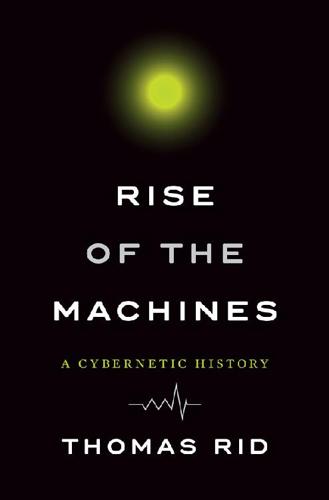
Rise of the Machines: A Cybernetic History
by
Thomas Rid
Published 27 Jun 2016
By early 1992, Timothy May and a friend, Eric Hughes, were becoming annoyed with the glacial progress of actual cryptographic technologies that could be used by normal people. Yes, Phil Zimmermann had just released his home-brewed PGP (for “Pretty Good Privacy”) 1.0 to the public. This was a significant step. Zimmermann, in violation of export control regulations as well as patent law, gave public-key encryption to the people. And the uptake of his rogue app, as well as the uproar, was big. But the first version of PGP was buggy and clunky to use. Much more was possible, and May and Hughes knew it. May had a taste for rugged frontier individualism, often sporting a wide-brimmed Stetson hat—a true crypto cowboy.
…
Stewart Brand, for one, remained highly skeptical of anonymity online. On April 1, 1994, when the Clipper debate reached its fever pitch, a “nobody” reported on the newsgroup that Phil Zimmermann had been arrested and that the crypto pioneer was being held on bail of $1 million.55 Brand was about to sit on a panel with Zimmermann and was not amused. He responded to the cypherpunks two days later: “The Zimmerman[n] prank,” he wrote, “hardens my line further against anonymity online. At its best, as here, it is an unholy nuisance.”56 Brand commanded tremendous authority among subscribers, so the founders didn’t appreciate his snide comment.
…
But the encryption available at the time didn’t conceal what was on the envelope: the sender’s address, the receiver’s address, and some other information about when and how the letter was sent. The correspondents’ identity was openly revealed. Encryption protected the content of packets but not the headers—what later would be called “metadata.” The now publicly available PGP protocol left metadata unprotected. PGP on its own, in short, created confidentiality, not anonymity. The cypherpunks wanted a solution to this problem. Remailers were the solution. These were dedicated machines programmed to take scissors to the envelopes, encrypted or not, to physically cut out the sender’s address and then forward the e-mail to the recipient.
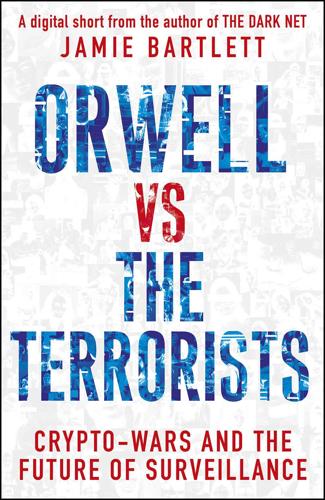
Orwell Versus the Terrorists: A Digital Short
by
Jamie Bartlett
Published 12 Feb 2015
By 2001, anonymous remailers were everywhere, an anonymous browser that allowed users to browse the web without anyone being able to track them was in development, untraceable black markets had sprung up online, the whistleblowing site Cryptome was becoming a thorn in the side of intelligence agencies. Better still, the US government had dropped its investigation into Phil Zimmermann, and PGP was being used all over the world. A New Battle The crypto-wars continue to this day. But Snowden’s revelations mark the beginning of a new battle, the opening of a new flank. Today, public concern is about more than just government. The new crypto-war is about data. These days we share inordinate amounts of information about ourselves online: our bank details, our love life, our holiday snaps; our whole lives are online.
…
Anonymous browsers like ‘Tor’, which are used to browse the net without giving away your location (and are used to access the ‘Hidden Services’, an encrypted network of sites that uses a non-standard protocol, which makes it close to impossible for websites or people who use them to be tracked) are becoming ever-more popular: there are now an estimated 2.5 million daily users. Facebook users, who used to be happy sharing everything with anyone, are inching towards more private settings. Phil Zimmermann’s PGP (‘Pretty Good Privacy’) encryption – that relic of the nineties crypto-wars which allows people to encrypt text and files – has been downloaded by millions. This will continue to grow, a sort of natural, organic response to growing concerns. Then there’s the way the large tech companies have, in response to the Snowden revelations, become more hesitant to work with the intelligence agencies.
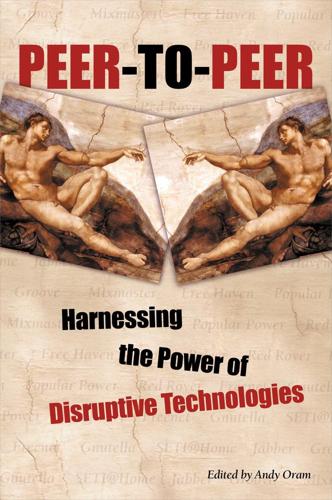
Peer-to-Peer
by
Andy Oram
Published 26 Feb 2001
Dublin Core metadata in documents, Resource description namespaces supported by Jabber, The centrality of XML used by Jabber as design basis, Jabber is created–Browsing Y Yang, Yinan, Codifying reputation on a wide scale: The PGP web of trust Young, Bob, A success story: From free software to open source Z Zeithammer, Robert, Acknowledgments Zephyr chat, Gnutella’s effects Zero-Knowledge Systems, Inc., Anonymous macropayment digital cash schemes Zeropaid.com, Gnutella pseudoanonymity Zimmermann, Phil, Codifying reputation on a wide scale: The PGP web of trust Special Upgrade Offer If you purchased this ebook from a retailer other than O’Reilly, you can upgrade it for $4.99 at oreilly.com by clicking here.
…
Unfortunately, these statistics did not carry over from one BBS to another—certainly not in any organized way—so they provided for reputations only on a microscopic scale. One of the first applications to handle reputations in an automated fashion on a genuinely large scale was the "web of trust” system introduced in Phil Zimmermann’s Pretty Good Privacy (PGP). This was the first program to bring public key cryptography to the masses. In public key cryptography, there are two keys per user. One is public and can be used only to encrypt messages. The other key is private and can be used only to decrypt messages. A user publishes his public key and keeps the private key safe.
…
Gnutella, Conclusions person-to-person conversations, Conversations and peers Personal Web Server (PWS), The writable Web PGP (Pretty Good Privacy), Signature verification, Codifying reputation on a wide scale: The PGP web of trust–Codifying reputation on a wide scale: The PGP web of trust authenticating invitations via, Shared space formation and trusted authentication key certification problem in, Codifying reputation on a wide scale: The PGP web of trust key revocation problem, Codifying reputation on a wide scale: The PGP web of trust not routinely used to secure email, Why secure email is a failure physical threats as censorship, Attacks on documents or the servnet, Legal and physical attacks PICS (Platform for Internet Content Selection), Resources and relationships: A historical overview Pieper, Josh, Host caches piggy-back rekey information, The New-Member-Added delta message PING packet type, Reducing broadcasts makes a significant impact Pippenger, Nicholas, Nonparallelizable work functions PKIs (Public Key Infrastructures), Anonymous macropayment digital cash schemes alternative to web of trust, Codifying reputation on a wide scale: The PGP web of trust Groove and, Shared space formation and trusted authentication–Shared space formation and trusted authentication lack of, Conclusions pseudospoofing and, Problems with pseudospoofing and possible defenses plaintext messages, Encryption and decryption Platform for Internet Content Selection (PICS), Resources and relationships: A historical overview pooling approach for ratings, Privacy and information leaks Popular Power, A Network of Peers: Peer-to-Peer Models Through the History of the Internet, Who’s in and who’s out?
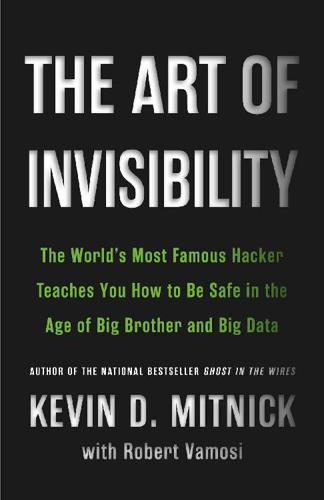
The Art of Invisibility: The World's Most Famous Hacker Teaches You How to Be Safe in the Age of Big Brother and Big Data
by
Kevin Mitnick
,
Mikko Hypponen
and
Robert Vamosi
Published 14 Feb 2017
Despite these reservations, the EFF actually does recommend BitLocker for the average consumer looking to protect his or her files.10 However, be aware there is a way to bypass BitLocker as well.11 Another commercial option is PGP Whole Disk Encryption from Symantec. A lot of universities use this, as do many corporations. I have used it in the past as well. PGP Whole Disk Encryption was created by Phil Zimmermann, the man who created PGP for e-mail. Like BitLocker, PGP can support the TPM chip to provide additional authentication when you turn on your PC. A perpetual license sells for around $200. There is also WinMagic, one of the few options that requires two-factor authentication instead of just a password.
…
This message will stay encrypted until Alice—and only Alice—uses a passphrase to unlock her private key and unlock the encrypted message. So how would encrypting the contents of your e-mail work? The most popular method of e-mail encryption is PGP, which stands for “Pretty Good Privacy.” It is not free. It is a product of the Symantec Corporation. But its creator, Phil Zimmermann, also authored an open-source version, OpenPGP, which is free. And a third option, GPG (GNU Privacy Guard), created by Werner Koch, is also free. The good news is that all three are interoperational. That means that no matter which version of PGP you use, the basic functions are the same. When Edward Snowden first decided to disclose the sensitive data he’d copied from the NSA, he needed the assistance of like-minded people scattered around the world.
…
If all this sounds complicated, that’s because it is. But there are PGP plug-ins for the Chrome and Firefox Internet browsers that make encryption easier. One is Mailvelope, which neatly handles the public and private encryption keys of PGP. Simply type in a passphrase, which will be used to generate the public and private keys. Then whenever you write a Web-based e-mail, select a recipient, and if the recipient has a public key available, you will then have the option to send that person an encrypted message.5 Even if you encrypt your e-mail messages with PGP, a small but information-rich part of your message is still readable by just about anyone.
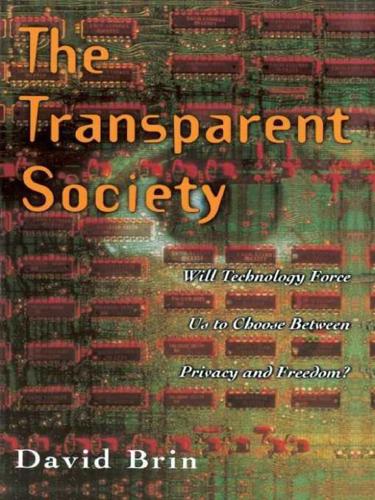
The Transparent Society: Will Technology Force Us to Choose Between Privacy and Freedom?
by
David Brin
Published 1 Jan 1998
But anyone serious about evading a wiretap would still be able to use something else, such as the widely distributed public key coding protocol called PGP, or Pretty Good Privacy, written by Philip Zimmermann. None of this softened the storm of outraged protests by those who perceived this as despotism on the march. Tom Maddox, a columnist for Locus magazine, put it this way: “The response from organizations such as EFF and the Computer Professionals for Social Responsibility and a number of corporations was immediate and almost uniformly negative. Seeing Big Brother embodied in the hardware, they balked.” The objections presented by these groups had much to do with their membersʼ collective sense of threatened rights. As PGP author Philip Zimmermann observes, “I think I ought to be able to go up and whisper in your ear, even if your ear is 1,000 miles away.
…
As PGP author Philip Zimmermann observes, “I think I ought to be able to go up and whisper in your ear, even if your ear is 1,000 miles away. If we install Clipper, then we canʼt do that, because the government will have a back door into our encrypted communications.” In a world of black and white ideologies, Zimmermann is actually more pragmatic and open-minded than many of his staunch defenders. “I think that the government does have some reasonable points to make. Criminals can use this technology to hide their activities,” he says. “I think the debate on cryptography is not an open-and-shut case.” Nevertheless, Zimmermann sees his role as promoting the crypto side of the argument, and leaving the opposition to others.
…
Then they came for the pornographers. But I thought there was too much smut on the Internet anyway, so I didnʼt speak up. Then they came for the anonymous remailers. But a lot of nasty stuff gets sent from anon.penet.fi, so I didnʼt speak up. Then they came for the encryption users. But I could never figure out how to work PGP anyway, so I didnʼt speak up. Then they came for me. And by that time there was no one left to speak up. WIDELY COPIED INTERNET APHORISM, A PARAPHRASE OF PROTESTANT MINISTER MARTIN NIEMOLLERʻS STATEMENT ABOUT LIFE IN NAZI GERMANY THE DEVILʼS OWN DICHOTOMIES Just one more point to raise, before moving on to the next chapter.
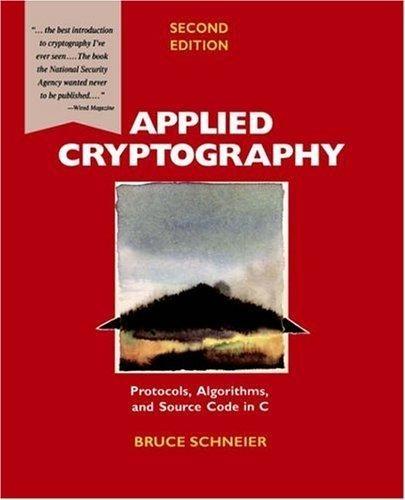
Applied Cryptography: Protocols, Algorithms, and Source Code in C
by
Bruce Schneier
Published 10 Nov 1993
PSMP will work with the Capstone chip (see Section 24.17). 24.12 Pretty Good Privacy (PGP) Pretty Good Privacy (PGP) is a freeware electronic-mail security program, originally designed by Philip Zimmermann [1652]. It uses IDEA for data encryption, RSA (with keys up to 2047 bits) for key management and digital signatures, and MD5 as a one-way hash function. PGP’s random public keys use a probabilistic primality tester, and get their initial seeds from measuring the user’s keyboard latency while typing. PGP generates random IDEA keys using the method delineated in ANSI X9.17, Appendix C (see Section 8.1) [55], with IDEA as the symmetric algorithm instead of DES. PGP also encrypts the user’s private key using a hashed pass phrase instead of a password.
…
Brillhart, “On Primitive Trinomials (mod 2),” Information and Control, v. 13, n. 6, Dec 1968, pp. 541–544. 1650. N. Zierler and W.H. Mills, “Products of Linear Recurring Sequences,” Journal of Algebra, v. 27, n. 1, Oct 1973, pp. 147–157. 1651. C. Zimmer, “Perfect Gibberish,” Discover, v. 13, n. 12, Dec 1992, pp. 92–99. 1652. P.R. Zimmermann, The Official PGP User’s Guide, Boston: MIT Press, 1995. 1653. P.R. Zimmermann, PGP Source Code and Internals, Boston: MIT Press, 1995. Previous Table of Contents Next Products | Contact Us | About Us | Privacy | Ad Info | Home Use of this site is subject to certain Terms & Conditions, Copyright © 1996-2000 EarthWeb Inc. All rights reserved.
…
And as Alice has to sign the key revocation certificate with her private key; if she loses the key altogether she cannot revoke it. Figure 24.7 PGP trust model. The current version of PGP is 2.6.2. A new version of PGP, PGP 3.0, is scheduled for release by the end of 1995. Changes in 3.0 include options for triple-DES, SHA, and other public-key algorithms, a split of the encryption and signature public-key/private-key key pairs, enhanced procedures for key revocation, improved key-ring management functions, an API for integrating PGP in other programs, and a completely rewritten code base. PGP is available for MS-DOS, UNIX, Macintosh, Amiga, and Atari. It is free for personal, noncommercial use, and is available from many ftp sites on the Internet.

Habeas Data: Privacy vs. The Rise of Surveillance Tech
by
Cyrus Farivar
Published 7 May 2018
However, as of June 2013, very few major e-mail providers were employing TLS. PGP (Pretty Good Privacy), by contrast, uses a much more cumbersome method to encrypt messages from end to end, and doesn’t rely on what the mail server is or isn’t doing. It requires that both parties on either side have a PGP key and have previously exchanged them (or looked them up on a public key server). PGP is notoriously difficult to set up and use regularly, particularly on a mobile device. The overwhelming majority of e-mail users do not encrypt their messages this way. PGP protects messages from the moment that they are sent to the moment that they are received, both in transit and at rest.
…
The release of his program, dubbed Pretty Good Privacy (PGP), was accelerated in January 1991 when an anti-terrorism bill authored by Senator Joe Biden (D-Delaware) included language that required that the government be allowed “to obtain the plaintext contents of voice, data, and other communications when appropriately authorized by law.” By April 1991, when Zimmerman and other privacy activists first heard about the legislation, they kicked into high gear. Rather than wait for his work to be made illegal, Zimmerman took his just-finished PGP and gave a copy to Kelly Goen, a fellow crypto-enthusiast in the San Francisco Bay Area.
…
Available at: http://www.nytimes.com/1993/05/06/business/big-brother-and-the-computer-age.html. The law primarily targeted: Nate Anderson, The Internet Police (W. W. Norton & Company, 2014). p. 107. Crucially, the law does: 47 U.S. Code § 1002. Available at: https://www.law.cornell.edu/uscode/text/47/1002. In late June 1996: Philip Zimmermann, “Testimony of Philip R. Zimmermann to the Subcommittee on Science, Technology, and Space of the US Senate Committee on Commerce, Science, and Transportation,” June 26, 1996. Available at: http://www.philzimmermann.com/EN/testimony/index.html. In 2000, the public: John Schwartz, “FBI’s Internet Wiretaps Raises Privacy Concerns,” The Washington Post, July 12, 2000.
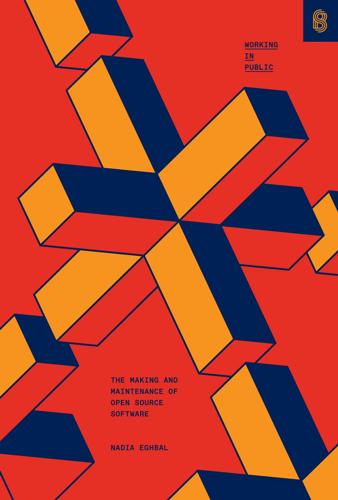
Working in Public: The Making and Maintenance of Open Source Software
by
Nadia Eghbal
Published 3 Aug 2020
In 1991, a programmer named Phil Zimmermann released an encryption program called Pretty Good Privacy (PGP). But cryptography, because it overlapped with national security, was considered a form of munitions in the United States. If cryptographic code crossed the borders to another country, it was treated as a munitions export. Early open source cryptographers, like those writing OpenSSL, had to become licensed arms dealers to be able to write and “export” (i.e., distribute) their code. As a result, Zimmermann found himself under criminal investigation by the United States government for distributing PGP, although no charges were ever formally filed.
…
As a result, Zimmermann found himself under criminal investigation by the United States government for distributing PGP, although no charges were ever formally filed. At the time, the US State Department ruled that, while code on a floppy disk could not be exported, books containing code—protected under freedom of speech—were permitted. So Phil decided to publish the same PGP code as a book, titled PGP Source Code and Internals, which he could then send around the world. Eventually, the United States dropped most export controls on open source cryptography. But the extreme disparity between regulation and reality highlights how, while governments provide public goods and services in our physical world, it’s much more difficult for them to serve this same role in our online world.
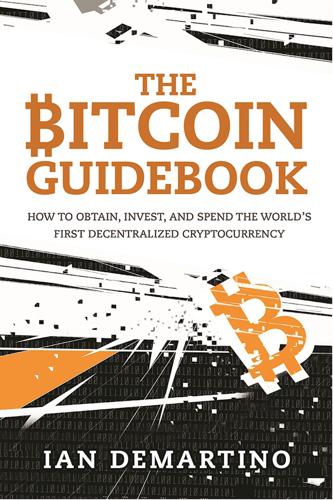
The Bitcoin Guidebook: How to Obtain, Invest, and Spend the World's First Decentralized Cryptocurrency
by
Ian Demartino
Published 2 Feb 2016
Deepdotweb.com and Reddit’s subforums r/Darkmarkets and r/DarkmarketNoobs are great resources for individuals looking to order something from the Deep Web. Ordering from these sites requires PGP and Bitcoin. Guides on how to use Bitcoin can be found in this book and countless places online. GnuPG (or GPG for short, often still referred to as PGP) is the open-source version of PGP, which was the world’s most popular and arguably powerful personal encryption software until GPG was released. It was invented by Phil Zimmerman and owned by the PGP Corporation until 2010, when it was purchased by Symantec.15 Since Windows is extremely unsecure and Tor has been shown to be compromised, it has been suggested that users with particularly strong concerns about privacy and anonymity should take the extra steps of using TailsOS, which I mentioned earlier.
…
It was the fact that it was the first sale where the buyer could be reasonably confident that his credit card information would be secure. Before Netmarket, anyone buying something online simply had to trust that the person on the other end wouldn’t steal this information. With Netmarket, customers were required to download special software based on the even-then-legendary PGP program. PGP, which stands for “Pretty Good Privacy,” is a technology that enabled private and secure communication between two parties on the Internet using encryption. A major milestone for cryptography, its encryption algorithms would serve as the basis for the industry for decades; open-source software based on it is still in use today.
…
Then, in 1975, with electronic communication on the rise, Whitfield Diffie invented the first “public key” system, potentially allowing anyone in the world to communicate securely with anyone else in the world, assuming they had access to a computer that could do the cryptography work. This system eventually led to the emergence of companies and services such as Phil Zimmerman’s PGP encryption program. It went head-to-head against the NSA’s Clipper Chip, a hardware-based cryptography solution designed to give the government its own backdoors into every phone and computer sold by US companies. PGP and the cypherpunks won the battle, as the Clipper Chip was shown to be insecure. The concept of government-endorsed backdoors faded from the cryptography community—although that didn’t stop the NSA from covertly adding its own backdoors, as when it paid security firm RSA to preserve security flaws for its snooping operations.5,6 Yet it could be argued they eventually lost the larger battle for the mind—if not the heart—of the general public.

Drugs 2.0: The Web Revolution That's Changing How the World Gets High
by
Mike Power
Published 1 May 2013
A happy consequence for the government of its targeting of this straw man folk devil will be unfettered access to all our private thoughts and conversations. You can never be sure a conversation is private without encryption, John Callas, an American computer security expert who co-founded PGP Corp with Zimmermann, tells me. The German government broke Skype’s encryption models by releasing malware and viruses into the wild that can easily unscramble voice calls across the network, allowing it to eavesdrop at will, he tells me – across a Skype line. ‘In the old days, hundreds of years ago people could speak privately by going out and taking a walk around the green and talking among themselves and there was no way people could listen in,’ he told me.
…
Encryption lets you have a private conversation with anyone else, and that’s needed by business and anyone that wants to talk in private.’ The history of encryption is a fascinating tale of early net privacy campaigners facing down the government – and winning. From the 1970s onwards, encryption was considered military hardware and could not be exported from the US. In 1995 Phil Zimmermann had the source code for PGP printed in book form and sent to Germany from the US, since the export of literature was not banned. An engineer in Germany scanned the code, recompiled it and distributed it online. The export regimes were eventually liberalized, as the government had to accept that encryption was nothing more than maths.
…
The secret key is held only by the recipient. Alice wants to tell Bob some sensitive information – or indeed any information intended only for his eyes. So Alice uses Bob’s public key to encrypt the message to him. Bob uses her private key to unlock, or decrypt the information. No one else can read it. In a 1991 paper, Phil Zimmermann, coder and security specialist, and author of the software package Pretty Good Privacy, wrote: It’s personal. It’s private. And it’s no one’s business but yours. You may be planning a political campaign, discussing your taxes, or having a secret romance. Or you may be communicating with a political dissident in a repressive country.
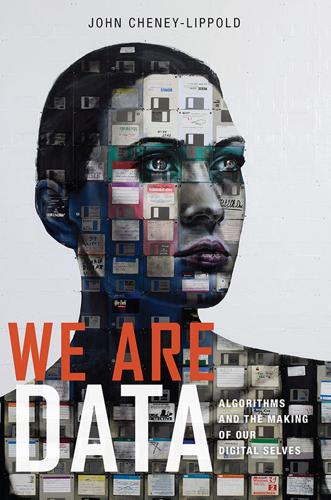
We Are Data: Algorithms and the Making of Our Digital Selves
by
John Cheney-Lippold
Published 1 May 2017
Rather than being a more adept or accurate processing feature, the U.S.’s ‘terrorist’ is merely a datafied object of simple, strategic convenience. It’s a functionalist category appropriate to the growing data-based logic of the NSA. Rephrased in these functionalist terms, the loaded question of “who is a terrorist?” is answered in the logical vernacular of engineering. As Phil Zimmermann, creator of encryption software PGP, described, “The problem is mathematicians, scientists, engineers—they’ll find ways to turn these problems into engineering problems, because if you turn them into engineering problems then you can solve them. . . . The NSA has an incredible capability to turn things into engineering problems.”18 Knowledge about who we are is constructed according to what ethicist Luciano Floridi refers to as the “small patterns” in data, or what political theorist Stephen Collier would call “patterns of correlation,” that extend the limits of conventional knowledge.19 The NSA’s ‘terrorist’ doesn’t replace the concept of terrorist but adds onto it yet another layer.
…
Charles Townshend, “The Culture of Paramilitarism in Ireland,” in Terrorism in Context, ed. Martha Crenshaw (University Park: Pennsylvania State University Press, 2010), 311–351. 17. Adam Entous, Siobhan Gorman, and Julian E. Barnes, “U.S. Relaxes Drone Rules,” Wall Street Journal, April 26, 2012, www.wsj.com. 18. Alexander J. Martin, “PGP Zimmermann: ‘You Want Privacy? Well Privacy Costs MONEY,’” Register, October, 8, 2015, www.theregister.co.uk. 19. Luciano Floridi, “Big Data and Their Epistemological Challenge,” Philosophy and Technology 25, no. 4 (2012): 436; and Stephen J. Collier, “Topologies of Power: Foucault’s Analysis of Political Government beyond ‘Governmentality,’” Theory, Culture & Society 26, no. 6 (2009): 87. 20.
…
DIT politics, 199 DNA, 12, 33, 72, 163, 233, 253 Dodge, Martin, 181 Dolar, Mladen, 171 DoubleClick, 19–20 Douglas, William, 210 Dourish, Paul, 227 Draper, Nora, 73 drone strikes, 3, 42, 295n102; targeted vs. signature, 39–40, 189 Drucker, Johanna, 47 Dudhwala, Farzana, 286n53 Dyer, Richard, xi EA Sports, 218 Electronic Privacy Information Center, 20 Elmer, Greg, 5 email, 19–20, 35, 39, 135, 160, 167–68, 188, 190, 215, 223, 236, 258; in PRISM, 289n12. See also Gmail emotions, 13–14, 32, 53, 118–21, 120, 210, 212; emotional contagion, 48. See also T2 Mood Tracker emphatic proximity, 165–66, 168 encryption, 22, 74, 160, 230–31; PGP, 42. See also Tor Engelhardt, Tom, 40 engineering, 18, 45, 65, 68, 72, 106–7, 122, 228, 292n73, 302n7; logics, 42, 86–87, 146, 148, 178–79 Eriksson, Kai, 149 ESPN.com, 19 essentialism, 19, 25, 64, 73, 75, 79, 102, 162, 272n49; antiessentialism, 26, 164, 171, 191, 281n110 ethnicity, 3, 74, 76, 86, 108, 114, 133, 163, 226, 229, 241, 257 European Union (EU), ix–xii, x, 20, 176–78 Facebook, xiii, 31, 52, 58, 108, 153, 192, 219–21, 226, 252–54, 259; News Feed, 48, 180–81, 184, 186, 192, 194–95; photographs, 14, 258; in PRISM, 289n12; privacy, 25, 155, 185, 207, 241, 244–46, 255–56; user studies, 48, 53.

Engineering Security
by
Peter Gutmann
[146] Nelson Bolyard, posting to discussion thread for “Most common trusted root certificates”, 15 June 2010, http://netsekure.org/2010/04/most-commontrusted-root-certificates/#comment-435. [147] “E-Gesundheitskarte: Datenverlust mit Folgen“, Detlef Borchers, 10 July 2009, http://www.heise.de/security/news/meldung/141864. 744 PKI [148] “Loss of data has serious consequences for German electronic health card”, Detlef Borchers, 11 July 2009, http://www.h-online.com/security/news/113740. [149] “Re: [TLS] New version of Multiple OCSP mode of Certificate Status extension”, Peter Gutmann, posting to the tls@ietf.org mailing list, messageID E1OgKhk-0006UP-Fe@wintermute02.cs.auckland.ac.nz, 4 August 2010. [150] “The Evolution of PGP’s Web of Trust”, Phil Zimmermann and Jon Callas, in “Beautiful Security”, O’Reilly, 2009, p.107. [151] “Reflecting on PGP, keyservers, and the Web of Trust”, Greg Rose, posting to the cryptography@c2.net mailing list, message-ID 4.3.1.0.20000901145546.00c55100@127.0.0.1, 1 September 2000. [152] “Investigating the OpenPGP Web of Trust”, Alexander Ulrich, Ralph Holz, Peter Hauck and Georg Carle, Proceedings of the 16th European Symposium on Research in Computer Security (ESORICS’11), Springer-Verlag LNCS No.6879, September 2011, p.488. [153] “Another fake key for my email address”, Erinn Clark, posting to the tortalk@lists.torproject.org mailing list, 9 March 2014, message-ID 20140309192556.gc5591@berimbolo.double-helix.org. [154] “Re: Another fake key for my email address”, Guido Witmond, posting to the tor-talk@lists.torproject.org mailing list, 10 March 2014, message-ID 531DABE1.5020006@witmond.nl. [155] “Codes of the Underworld”, Diego Gambetta, Princeton University Press, 2009. [156] “Why Johnny Can’t Encrypt: A Usability Evaluation of PGP 5.0”, Alma Whitten and J.
…
Another such vulnerability affected some versions of PGP that use a capability called Additional Decryption Keys (ADK), a feature requested by commercial users in order to provide a data-recovery access capability to data encrypted by employees in the event that they left the company or were incapacitated. PGP carefully authenticated the ADK information that was placed in the set of authenticated attributes associated with the key (called the hashed subpacket area in PGP terminology), but then treated further ADK information that it found in the set of unauthenticated attributes (the 362 Design unhashed subpacket area in PGP terminology) in the same way as the authenticated attributes.
…
OpenSSL’s CA module has a similar problem, with the valuable CA private key stored in cakey.pem while the public key that endless HOWTOs and similar documents tell people to distribute to all and sundry is stored just a typo away in cacert.pem. PGP attempted to solve the problem in a similar manner by only allowing the public key components to be exported from a PGP keyring even if the user specifies that the PGP private keyring be used as the source for the export. Unfortunately the PGP keyring naming convention was established during the MSDOS 8.3-filename days so it’s not possible to use the Tor naming trick to provide safety at the file level, and as a result it’s not uncommon for users to send out the private keys or private keyrings in response to a request for their key, an issue discussed in more detail in “Certificate Chains” on page 669.

This Is How They Tell Me the World Ends: The Cyberweapons Arms Race
by
Nicole Perlroth
Published 9 Feb 2021
He went on 60 Minutes and, in an hour-long at the Brookings Institution, told an audience that the “post-Snowden pendulum” had “swung too far,” noting that Apple’s new encryption “threatens to lead us to a very dark place.” Comey was essentially making the same arguments the White House had two decades earlier after a programmer named Phil Zimmermann released end-to-end encryption software to the masses. Zimmermann’s Pretty Good Privacy (PGP) software made it far easier for people to communicate over end-to-end encryption, which scrambles messages in such a way that they could only be deciphered by the sender and recipient. Fearing that PGP would make surveillance impossible, the Clinton administration proposed a “Clipper Chip,” a backdoor for law enforcement and security agencies. But the Clipper Chip provoked a backlash from a coalition of unlikely bedfellows, including Missouri Republican senator John Ashcroft and Massachusetts Democrat senator John Kerry, the televangelist Pat Robertson, Silicon Valley executives, and the ACLU.
…
-Israeli attack on Nuclear Regulatory Commission, here nuclear weapons, here, here nuclear weapons policy, China, here nuclear weapons research, here nuclear weapons security, here Obama, Barack campaign office cyberattack, here credit card fraud, here on cyber theft, here hacking campaign position, here IRA false stories, here movie-viewing habits, here Olympic Games worm briefing, here privacy and national security, position on, here Snowden conversation, here Obama, Barack, administration Cyber Command, here cyber deterrence policy, here, here cybersecurity position, here foreign targets list, here infrastructure policy, here infrastructure weakness’ identification, here Olympic Games project, here, here zero-days policy, here Obama, Barack, administration, foreign relations Argentina, here China, here, here, here, here, here Iran, here Israel, here North Korea, here Russia, here, here Obama, Michelle, here, here O’Brien, Conan, here O’Brien, Robert, here, here Office of Personnel Management (OPM), Chinese hacks of, here, here, here, here, here Office of the Director of National Intelligence, here Oleksiuk, Dmytro (Cr4sh), here Oliver, John, here Olsen, Matt, here Olympic Games project, here, here 163.com, here Only the Paranoid Survive (Pritchett), here OpenSSL, here, here Operation Ivy Bells, here, here Operation Regal (CIA and MI6), here Operation Shotgiant (NSA), here Oracle, here, here, here, here, here Ortega, Alfredo (CyberGaucho), here Ormandy, Tavis, here Owing the Net initiative (NSA), here Page, Larry, here, here Palm Beach County, here pandemic, coronavirus, here, here, here, here, here, here Panetta, Leon, here, here, here, here, here, here, here Parsec, Zenith, here Pascal, Amy, here password managers, here password security, here, here, here, here, here, here, here password-spraying attacks, here password-stealing tools, here PATCH Act—Protecting our Ability to Counter Hacking Act, here Patriot Act, here Pecker, David, here Pegasus (NSO Group), here, here, here Peña Nieto, Enrique, here Pentagon, here, here, here, here Perfect Forward Secrecy encryption, here Perry, William, here Petya (Soviet), here, here Pfizer, here Phineas Fisher, here Picasso (NSA), here Picasso, Pablo, here Pichai, Sundar, here PJSC (Russia), here Podesta, John, here, here, here Poroshenko, Petro, here Powell, Colin, here presidential elections (2008), here presidential elections (2016) Russian interference, here, here, here, here, here, here, here, here Trump’s Ukrainian theory, here presidential elections (2020) election security, here Iranian interference, here ransomware warnings, here Russian interference, here, here Pretty Good Privacy (PGP) software, here Prigozhin, Yevgeny, here Prins, Michiel, here, here Prism (NSA), here, here, here Pritchett, Price, here, here privacy, here, here Project DREAD (Development Research Exploitation and Analysis Department), here Project Gunman (NSA), here, here, here, here, here, here Project Raven, here Project Zero (Google), here, here, here proof-of-concept exploit, here, here Proto, Rick, here, here Putin, Vladimir.
…
But the Clipper Chip provoked a backlash from a coalition of unlikely bedfellows, including Missouri Republican senator John Ashcroft and Massachusetts Democrat senator John Kerry, the televangelist Pat Robertson, Silicon Valley executives, and the ACLU. All argued that the Clipper would kill not only the Fourth Amendment but also America’s global technology edge. In 1996, the White House backed down. Each new novel encryption effort generated anxiety. When Zimmermann introduced a Zfone in 2011, NSA analysts circulated the announcement in an email titled “This can’t be good.” The Zfone stagnated, but Apple’s new iPhone, and its iOS software, were essentially the Zfone for the post-Snowden era—only with exponentially more data for the government to lose. In late 2014 the FBI and Justice Department made preparations to confront Apple in court.
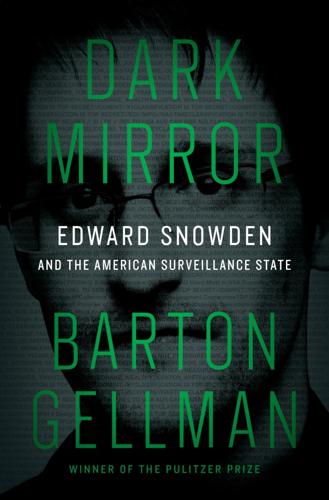
Dark Mirror: Edward Snowden and the Surveillance State
by
Barton Gellman
Published 20 May 2020
Today’s Tor Project (originally an acronym for “The Onion Router”) offers a free, easy-to-use anonymous browser at www.torproject.org. GPG, the gold standard of email and file encryption: GPG, also known as Gnu Privacy Guard and GnuPG, is a free, open-source implementation of the encryption standard pioneered by Phil Zimmermann in the commercial software package called Pretty Good Privacy, or PGP. (Already we have four names for the same basic product, five if we add OpenPGP.) The original author of GPG remains sole custodian of the code. He marked its first decade in a post to an email listserv, archived here: Werner Koch, “GnuPG’s 10th birthday,” December 20, 2007, https://lists.gnupg.org/pipermail/gnupg-announce/2007q4/000268.html.
…
See Moxie Marlinspike, “GPG and Me,” February 4, 2015, www.thoughtcrime.org/blog/gpg-and-me/. Even the commercial PGP software, which had a friendly graphical interface, was baffling to ordinary users. In a controlled test with a dozen beginners, three accidentally made public their secret encryption keys (which defeated the main protection of PGP), all twelve disregarded instructions to choose a complex passphrase, one forgot her passphrase, and one never managed to send an encrypted message at all. See Alma Whitten and J. D. Tygar, “Why Johnny Can’t Encrypt: A Usability Evaluation of PGP 5.0,” Proceedings of the 8th USENIX Security Symposium, August 23, 1999, 169–84, www.gaudior.net/alma/johnny.pdf [inactive].
…
Before I could make my way downtown, a second email appeared. Same mundane-looking subject line, signaling “urgent.” As the body of her encrypted message crossed the internet, the ciphertext looked like this: –––––BEGIN PGP MESSAGE––––– hQIOA7RnVIVebwveEAgA7OBO1qtnQ1mdDTZwU4eI1ZbfF57dLNIb0UxeunqK8q9Zoo9a0iHGjVreqo0YKip/lpX7rohHmA/T038jjgnsF9E6hNahg1ZWcBRabfOxGUxu8Gzxk5H9m+k0dHCqg6EVwAoIWunkghc6jG2p/seNFNCR36vjgCy2BuF47Jc0oKgc[. . .] –––––END PGP MESSAGE––––– I plugged in a thumb drive. On it was my private key, a small digital file required to decrypt her message. I typed two passphrases, one to mount the thumb drive and another to enable use of the key.

GCHQ
by
Richard Aldrich
Published 10 Jun 2010
Martin Hellman recalls: ‘Some of my friends who had worked in the intelligence community even told me that my life could be in danger.’12 In 1993 these matters were brought to a head by a software engineer living in Boulder, Colorado, called Phil Zimmermann. He developed a code-making programme for desktop personal computers called ‘PGP’, which stood for ‘Pretty Good Privacy’, and then gave it away on the internet for free. Zimmermann had developed a quick and easy-to-use version of Public Key Cryptography that retained much of its strength, but greatly simplified its use. Now even the most non-technical computer user enjoyed access to strong cyphers and secure email communications. The American government was horrified, declaring that Zimmermann had effectively ‘exported munitions’, and actually began a public prosecution, hoping to put him in jail.
…
In the First World War, the Second World War and again in the Cold War, poor discipline by the human operators often proved to be the great weakness in otherwise impregnable cypher systems.4 The Royal Navy code-breakers, who had established themselves in the Admiralty’s ‘Room 40’, achieved even greater success. Famously, they broke the ‘Zimmermann Telegram’, a message sent from the German Foreign Minister, Arthur Zimmermann, suggesting an alliance between Germany and Mexico against the United States. As an inducement, Mexico was to be offered the return of her lost territories in Texas, New Mexico and Arizona. These revelations, made public in March 1917, were central in bringing the United States into the First World War on the side of Britain and France.
…
AB Cryptoteknik 213 ‘ABC’ trial (1977–78) 8, 359–61, 423, 459 Abernethy, Barbara 70 Abu Hamza al-Masri 542 Abyssinia (Ethiopia) 19 Adams, Gerry 500 Aden (Yemen) 6, 156, 164, 345 Admiralty Signals Division 137 Admoni, Nahum 471 Adye, John 427, 431, 476, 483, 494, 495, 598, 608 aerial reconnaissance 31, 59 Afghanistan 387, 420, 421, 510, 511, 533–9 Africa 99, 148, 182, 268, 299, 336, 454–5, 479 Aid, Matthew 521 Aiken, John 326, 327, 328, 331 Airborne Rafter programme 267, 538 Aitken, Jonathan 493–5 al-Badr, Imam 163–4 al-Jazeera 513–14 al-Qaeda 9, 509–11, 513–14, 517, 532 Alanbrooke, Field Marshal Lord 45 Aldeburgh (Suffolk) 286 Aldridge, Peter 449 Alexander, A.V. 123–4 Alexander, Hugh 25, 27, 78, 96, 599 Allen, Lew 357 Allied Commission for Austria and London 170 Alp, Saffet 314 Alvear, Soledad 519 American Office of Naval Intelligence 143 American Type-777 satellite 348 Amery, Julian 162–3, 295 Ames, Aldrich 385, 444 Amory, Robert 158 Amsterdam 487 Anaya, Admiral Jorge 389, 393, 395 Anderson, Jack 344 Andrew, Christopher 2, 362 Anglo-American-Commonwealth sigint 64, 82, 152 Anglo-American relations 7–8; and Balkans 472–5; and Berlin tunnel operation 172–6; changing nature of 441–3, 449–50; and cost of cooperation 222–3; and Cuba 341–2; deterioration in 281–95, 333; and Far East 151–2; and global sigint 89–101; gradual improvement in 295–8; impact of politics on 278; and liberating of Axis sigint 47–56; and Nimrod programme 268–70, 273–4; and Project Sandra 322–3; and public disclosure of sigint material on 355–7, 358, 361–2; and sale of cypher machines 209–15; shared problems 333–4; and sigint 7–8, 38–46, 91–2; and sigint satellite and computer revolution 347–54, 437–8; successful Russian intercepts 279–81; and Suez crisis 157–9; and Third World bases 334–9; and trade unions at GCHQ 421–2, 429; in Turkey 302; and Venona Project 72–88; in wartime 38–46 Angola 357, 454–5 Ankara 58, 254, 302, 303, 305, 310–11, 313, 315, 318, 330 Annan, Kofi 523–4 Antalya (Turkey) 326 Anti-Christ Doom Squad 487 Anti-Smuggling Task Force (Hong Kong) 477 AQ Khan network 531 Aquarius (computer) 349 Arab-Israeli War (1973) see Yom Kippur War Arab states 109 Arafat, Yasser 277 Aral Sea 306 Arbuthnot, Mrs 70 Arctic Circle 133, 136–9, 144–6, 147, 265 Argentina 307–8, 388–415 Argentine Air Force 401, 408, 410, 415 Argentine Army 396 Argentine Navy 395, 405, 408 Argus satellite 377 Arlington Hall (US Army code-breaking centre, Washington) 45, 74, 77, 80, 83 arms control 203, 257, 287, 288, 290 Armstrong, Sir Robert 416, 425, 427, 428, 430–1 Army Intelligence Corps 230 Army Security Agency 80 as-Sallal, Abdullah 163–4 Ascension Island 162, 278, 321, 392, 414 Ash, Timothy Garton 465 Athens 324, 330 Atlantic, Battle of (WWII) 42, 60 Atlas (computer) 349–50 Atomic Demolition Munitions (ADMS) 249 Atomic Energy Authority (AEA) 261 Atomic Energy Intelligence 155 atomic and nuclear weapons 2, 5, 36, 45; and Anglo-US arms control 287–9; at Los Alamos 75, 76, 82; British 163, 249; Chinese 155; need for better intelligence on 253, 255, 321–3; Soviet 107–8, 112, 114, 116, 119, 131–2, 148, 157, 173, 301–2; spiralling of arms race 438–9; US 249; US put on alert (1973) 293–4 Atomic Weapons Establishment (Aldermaston, Berkshire) 418–19 Attlee, Clement 73, 86 ATV 432 Aubrey, Crispin 358–9, 360 Auckland (New Zealand) 487 Audiotel 480 Augsburg (Germany) 48 Austin, Harris M. 115 Australia 79, 80, 85–8, 89, 90, 92–4, 98, 154, 164, 165, 167, 168, 213, 467, 477, 487, 533; Australian Security Intelligence Organisation (ASIO) 86–7, 88; Central Bureau 92; Defence Signals Branch (DSB) 151, 153, 213; Defence Signals Department (DSD) 348; Royal Australian Air Force 150; Royal Australian Navy 266; Royal Australian Signals 166 Austria 96, 371, 384 Automatic Data Processing 353 Ayios Nikolaos (Cyprus) 156, 162, 163, 230, 234, 327, 328, 358–9, 360, 383, 384 Azerbaijan 109 Bad Aibling (Germany) 423 Bad Godesberg (Germany) 215 Badger’s Lair (SAS training exercise) 249–50 BAE Systems Ltd 544 Baghdad (Iraq) 161, 468, 469, 471, 524 Baghdad Pact 161 Bahia Paraios (Argentinean ship) 394, 395 Bahrain 347 Baillie, George 122 Bain, Helen 445 Baldwin, Stanley 18, 72, 400 Balgat (Turkey) 303 Bali bombing (2002) 511, 513 Balkanabteilung (German code-breaking HQ) 50 Balkans 51 Baltic 112, 114, 116, 125, 285 Baltic Sea 273 Bamford, James 263, 361–2, 521 Bandaranaike, Solomon 160 Bank of England 241, 487 Banner, Gordon 312–16, 318 Barbieri, Major 52, 53–4 Barents Sea 114, 115 Barker, Nick 391–2 Barkley, Howard 77 Barsby, Mrs 374–5 Basra (Iraq) 466, 525 Battle of Britain 29 Bay of Pigs crisis (1961) 8, 226 BBC 330, 348, 429, 501, 517, 523–4; BBC Scotland 459 Beach, Sir Hugh 380, 381 Bearman, Sid 595 Beasley, Tony 133–9 Beaumanor Hall (Leicestershire) 63 Beijing 476 Belbasi (Turkey) 302 Belfast 261, 500, 501 Belgium 442, 492 Bell, Rod 409, 410 Benitez, Rafael 114, 115 Benjamin, Ralph 216 Benn, Tony 227 Bennett, Ralph 59 Bentinck, Victor Cavendish 67 Bergen (Norway) 450 Bergold, Harry 295 Beria, Lavrentii 107 Berlin 112, 127–8, 130, 196–7, 227, 228, 253, 270, 369, 370, 372, 478; Berlin Blockade (1948) 71, 113; Berlin Cryptographic Centre 50; Berlin tunnel 169, 170, 172–6, 373, 477 Berlusconi, Silvio 532 Berry, John 358–9, 360 Betts, Richard 600 Beulmann, Major 50 Bevin, Ernest 70 BfV (German domestic security service) 452–3 bin Laden, Osama 511, 513, 514, 549 Binalshibh, Ramzi 514 Bingham, Lord 481 Birch, Frank 43 Bitburg (Germany) 131 Black, Jeremy 407, 408 black chambers 4, 14 ‘Black Friday’ (29 October 1948) 81, 108, 119, 169, 280 Black Sea 112, 131–2, 301, 302, 311, 313, 317, 319 Blair, Tony 4, 436, 497–8, 500, 504, 506, 509, 515, 517, 519, 530, 532 Blake, George 173, 174–5, 176, 178, 179, 238, 385 Bleckede 127 Bletchley Park 103, 186, 188, 221, 354, 549; Americans at 39, 43; and breaking ‘Red’ 25–6; closure of 67–71; and cypher security 54–9; expansion and reorganisation 27–8, 62–3; GCHQ as successor to 1, 5; Huts Three and Six 23, 25, 36, 48, 64–5, 119, 121, 356, 362–3, 364, 387; and machine-based espionage 5; military emphasis at 22–3; post-war role 60–1, 63–7; release of records on 355; SIS GC&CS moves to 22–8; takeover of Axis sigint effort 47–54; tight security measures at 69; unmasking of 362–3; wartime value and achievements 59–60, 61–3; wartime work of 1–2, 5, 25–9, 30, 31–46, 109–10 Blix, Hans 520 Block, Lieutenant 145 Bloomer-Reeve, Carlos 394, 412 ‘Blue Book’ 2–3, 395–6 Bluff Cove (Falklands) 400 Blum, Eberhard 450, 452 Blunkett, David 510, 522 Blunt, Anthony 36, 37, 83, 188, 224, 225, 364, 367 Board of Trade 241 Bodsworth, William 69, 80 Boizenburg (Germany) 127 Bolivia 52, 300 Bonnet, Georges 52 Bonsall, Arthur ‘Bill’ 110 Bontoft, Gerry 352 Borehamwood (aka ‘Department B’, London) 181, 182, 190 Borisenko, Alexsandr Ivanovich 236, 237 Borneo 6, 148, 164–8, 250 Bosnia 8, 9, 471–4, 512 BOSS (South African secret service) 357 Bourbon (Soviet radio intercepts) 75 Boyce, Ed 377 Bracknell (Berkshire) 113 Bradley, General Omar 116 Bradshaw, Mike 423 Brauntoltz, George 432 Bremerhaven (Germany) 116 Brezhnev, Leonid 245, 247 Brezhnev Doctrine 244 Bride (UK code-name for Venona) 80 Bridges, Sir Edward 42, 141–2, 181 Brinks Mat bullion robbery (1983) 505 British Army 14–15, 63, 451, 469, 472; 9 Signals Regiment 162, 327, 383–4; 13 Signals Regiment 166, 228, 493; 14 Signals Regiment 524, 525, 534; 40 Commando 525; British Army on the Rhine 248, 412; First Armoured Division 467, 525; Queen’s Dragoon Guards 525; ‘Rhino Force’ 467; Royal Armoured Corps 248; satellites 198, 208–9, 223, 243, 258, 262–3, 340, 342, 344, 345–8, 347–8, 376, 377, 401, 415, 421, 437–8, 441, 442–3, 445–7, 460–1, 478; sigint units 162, 166–7, 218–19, 228, 327, 383–4, 493, 524, 525, 534; Special Air Service (SAS) 164, 165, 168, 248–51, 359, 409, 410, 411, 468, 472, 475, 536, 583; Special Boat Service (SBS) 333, 409, 410, 411, 443, 468; Special Operations Executive (SOE) 36, 51; Special Reconnaissance Squadron 248 British European Airways (BEA) 129 British Indian Ocean Territories (BIOT) 334 ‘British Intelligence and Weapons of Mass Destruction’ (Butler Report) 2 British Leyland 367–8 British Military Mission (Brixmis) 123, 245–6, 247, 252 British Nuclear Fuels Ltd 500 British Psychological Society 433–4 British Tabulating Machine Company 349 British Telecom 545; Medium Wave Tower (Holyhead) 500 Britten, Douglas 230–8, 369, 382 Broadcasting Standards Authority 481 Broadside operation (US Embassy intercepts in Moscow) 280–1 Brockway, Ernst 383 Brook, Sir Norman 142, 219–20 Brooks, Richard 399 Brooks Field (Michigan) 120 Brown, Gordon 498 Brundrett, Sir Frederick 177, 178 Brunei, Sultan of 164, 586 BRUSA agreement (1943) 43, 44, 121, 151 Brussels 179, 253 Brzezinski, Zbigniew 448 Buffham, Benson 381, 424 Bufton, Air Vice Marshal 207 bugging operations 176–82, 193, 196–7, 473–4, 479, 482, 499 Bulganin, Nikolai 140 Bulgaria 518, 519 Bundesnachrichtendienst (BND, German foreign intelligence service) 214–15, 422–3, 438, 447–51, 452–4, 455, 456, 471, 472, 524 Bundy, William ‘Bill’ 50, 356, 363, 364 Bunyan, Tony 361 Burgess, Guy 8, 37, 73, 82, 83, 84–5, 224, 225, 238, 367 Burma 65 Burrough, John 598 Burton, Sir Edmund 527 Burton-Miller, T.R.W. 57, 191, 577 Bush, George H.W. 356–7 Bush, George W. 511, 517, 532 Butler, Lord 2, 428, 482, 529–31, 610 Byers, Stephen 506–7 Byrnes, Jimmy 53 ‘C’ (head of SIS) 16, 24, 67 Cabell, Charles 96 Cabinet Office Intelligence Coordinator 241, 245, 264, 353, 354, 360, 387, 399, 504 Cable, Danielle 505, 506 Cable, James 278 cable vetting 238–41 Cable & Wireless 240, 312, 392 Caccia, Harold 171 Cadogan, Sir Alexander 23–4, 26, 39, 45, 70 Cairncross, John 36–7, 73, 82, 364 Cairo (Egypt) 58, 159, 179, 185 Callaghan, James 324, 325, 330, 333, 361, 391 Calvi, Roberto 407 Calvocoressi, Peter 59, 61 Cameron, Stephen 505 Campaign for Nuclear Disarmament (CND) 368 Campbell, Alastair 517, 523, 530 Campbell, Duncan 8, 358, 360, 361, 362, 423, 458–9 Canada 38, 89, 93, 95, 97–8, 178, 447, 533; Canadian CBNRC 348; Canadian Communications Security Establishment (CSE) 381, 447; Canadian Joint Intelligence Committee 92 Canine, Ralph 101, 174, 336 Canyon satellite 376 Cape Canaveral (Florida) 322, 437, 461 Cape Matapan, Battle of (1941) 60 Capenhurst Tower (Cheshire) 500–1 Caraman, Mihai 253–4 Carey-Foster, William 185, 188, 228 Carlile of Berriew, Lord 543–4 Carpenter, Harry 598 Carrington, Lord 282–3, 284, 294, 389, 394, 396, 423–4 Carsamba (Turkey) 311–12 Carter, Jimmy 390, 448 Carter, Marshall 264, 272, 273–4, 350 Carter, Pat 448 Cartwright, Ian 328 Carver, Michael 334 Casey, Bill 457 Caspian Sea 112, 132, 161, 301, 302 Castle, Barbara 240 Castro, Fidel 226, 341 Catroux, Georges 52 Caucasus 131, 157 Caviar (Soviet encyphered traffic) 49, 69 Cayan, Mahir 309, 310–15, 314 Caygill, David 445 Celebes 167 Cellnet 481 Cemgil, Sinan 306 Central Gunnery School (Leconfield) 126 Central Signals Establishment 113–14 Ceylon 58, 69, 160, 259, 352 Chagos Islands 278, 335 Chamberlain, Neville 3, 18 Charles, Prince 482 Cheadle (Cheshire) 34, 63, 231 Chechnya 494–5 chemical weapons 470–1, 516 Chevaline project (upgrading of Polaris) 438–40, 459 Cheyne, Bill 166 Chicago Islands 278 Chicksands (Bedfordshire) 63, 360, 535 Chifley, Ben 86, 88, 94 Chile 357, 394, 396, 517 China 98, 129, 150–5, 193–5, 256, 273, 277, 282, 285, 376, 475–8; Chinese Communist Party 150; People’s Liberation Army 151 Chinese language teaching 598 Ching Peng 149, 150 Chippewa Falls (Minnesota) 350 Chirac, Jacques 520–1 Chitty, Brigadier 55 Chiverton, Roy 476 Chum Hom Kok (Hong Kong) 475–6 Church, Frank 356, 357 Church Committee 356, 357 Churchill, Winston 84; addiction to ‘Ultra’ intelligence 1; and airborne incidents 128, 129; and bugging operations 177; comments on the Belgians and Dutch 52; and cypher security 56; and diplomatic intelligence 41; and elint airborne operations 124; and Kuznetsov-Marshall affair 187, 189; meets Stalin 47; as recipient of sigint 3, 5, 40; supports work at Bletchley 26–7, 59, 65, 362 CIA (Central Intelligence Agency) 85, 87, 91; and Bay of Pigs 8, 226; and Berlin-Vienna tunnel operations 169–76; and counter-espionage coup 253–4; and Cyprus 324, 326–7; Foreign Broadcast Information Service 155; and invasion of Czechoslovakia 246; and invasion of the Falklands 399; Jewish sympathisers in 97; and Korean War 100; and Libyan terrorism 457; and Middle East 157, 158; and Nixon administration 4, 278; Office of National Estimates 151; revelations concerning 356–8; Russian spies in 444; security measures 101, 381; and shooting of Che Guevara 300; and Soviet weapons 108, 439; Special Activities Division 514–15; and Turkey 472; and U-2 spy planes 142, 226, 292, 296; and use of communication satellites 348; and Venona Project 77, 82; and Zinnia 322 Cianchi, Commander 54 CIB3 (Metropolitan Police anti-corruption squad) 506 City of London 487, 510 Civil Service 381, 421, 427; Civil and Public Servants Association (CPSA) 419–20; Civil Service Medical Officers Group 382; Civil Service Order in Council (1982) 431; Civil Service Union (CSU) 418, 420, 422–3; First Division Association 435; Society of Civil and Public Servants 426 Claret operations (1964–66) 165–8 Clarke, Kenneth 481, 482 Clarke, Liam 608 Clarke, Peter 266–7 Clarke, William F. 66 Cleveland, Paul 444–5 Clifford, Clark 333 Clinton, Bill 492 Clipper Chip (encryption bypass system) 492 Cobra (Cabinet emergency planning committee) 509–10, 527, 532, 610 Cobra Mist (Over the Horizon Radar) 285–7 code-breakers 2, 6, 198; and Anglo-American relationship 38–46; Australian 92; and Berlin tunnel operation 174; collaboration with Baltic states 31; combined operations 15–16; and computers 340, 348–9, 350–1; and decypherment of ‘Fish’ messages 28; diplomatic 27–8, 37, 43–4, 52–3; during WWII 25–9, 30–46, 58–9; Egyptian 164; and ending of WWII 61; expansion of 63–4; Far Eastern 40; Finnish 32, 35, 91; and French intercepts 52, 53, 209; and global sigint 96; importance of Hong Kong to 151; international work 16–17; and internet 493; Italian 52–4; military operations 14–15, 19–20; move from Bletchley to Cheltenham 5; naval 15; and Pelton affair 444; and personal computing and the internet 488; as Post Office department 14; pre-WWII 22–5; and Prime case 380; quadripartite meeting on computer hackers and encryption 489; revival on eve of WWI 14–15; Russian focus 17–19, 33–8, 169; and sale of cypher machines 209–15; and supply of intelligence reports 2–4, 6–7; and telephone tapping 170–1; and use of cypher machines 21–2; value of 60; and Venona Project 72, 74–88; wartime secrecy 354 COINS (Community On-line Intelligence System) 353 Colby, William ‘Bill’ 293, 327, 329, 330 Cold War 47, 377, 420; airborne incidents 125–33; benefits of intelligence in 175–6; Berlin blockade 71; calming of nerves in 257–8; computing in 349; end of 461, 465, 477, 478–9, 493; flashpoints 203; high profile espionage activity in 8; and planning for future war 247–53; seaborne incidents 133–47; secret service operations 484; sigint in 1, 2, 5, 107–24, 125–47, 402; Soviet nuclear weaponry 108; telephone and bugging operations 169–82; thawing of 195–7; and Venona Project 72–88 Cole, David 379, 380 Coleman, Don 131 Coleridge (Soviet teletype system) 78 Colombia 486, 538 Colonial Office 150 Colorob (computer) 349 Colossus (computer) 28, 48, 68, 70, 349 Combined Cypher Machine 98 Comet aircraft 121–2, 268, 273, 295 Cominstum (digest of hot material) 96 comint (communications intelligence) 96, 101, 110, 111, 122, 123, 228, 252–3, 266, 385, 402, 413 Comintern (Communist International) 19, 30, 37–8, 79 Commonwealth 85–8, 89, 92, 95, 97, 148, 266, 352, 447 Communications Branch of the National Research Council (CBNRC) 94 Communications Data Bill (2009) 543 Communications-Electronics Security Department 241–2 Communications Trials Ship (purpose-built sigint ship) 260–2 Communist Party of Great Britain 19, 188, 367–8, 417 Communist Party of India 87 Communist Party of USA 87 Comprehensive Comparative Radar Library 266 computers 198, 219, 220, 222, 340–1, 342–3, 348–54, 458, 486–93, 507, 507–8, 513, 527–8, 546–8 comsec (communications security) 90, 191–3, 195–7, 211, 218, 241–2, 377 Confederation of British Industry (CBI) 241 Conflict (Vienna tunnel code) 171 Congo crisis (1960) 336 Control Orders 543 Cook, Robin 498 Cooney Hill psychiatric hospital (Gloucester) 382 Cooper, Arthur 598 Cooper, Frank 423 Cooper, Josh 20, 34, 213 Coote, John 136, 137, 138, 143 Copenhagen (Denmark) 179 Corona (satellite) 208 Corporal (battlefield missile system) 249 Cosby, Bill 327 Costello, John 364 Cot, Pierre 53 counter-terrorism 456, 516, 528 Cox, Arthur 301 Crabb, Lionel ‘Buster’ 140–3, 207 Cradock, Percy 193–4, 294 Crankshaw, Edward 34, 35–6, 64 Cray super computers 350–1 Crete 157, 265, 292 Croatia 471–4 Croft, John 37–8 Cromer, Rowley 287–8, 294, 297, 337 Croslieve Mountain (Northern Ireland) 501 Crossman, Richard 227 Cruise missiles 511, 513 Crypto AG 212–15, 457 CSE (Communications Security Establishment) Watton 131 Cuba 226, 341–2; Cuban Missile Crisis (1962) 203, 253, 260 Cukr, Baclav 112 Cummings, Mansfield (aka ‘C’) 16 Cunningham, Andrew 91 Current Intelligence Groups 291, 396 Currie, Laughlin 87 Currier, Prescott 39 Curry, John 79 Curzon, George 15, 16, 18 cyber attacks 487–93 cypher machines; capture of 48–9, 264; Chinese capture of 194, 195; commercial origins of 20; development and use of 20–2, 57, 192; military 54; online 28, 210; and proposed Anglo-US collaboration 98–9; radiation or emanation from 215–18; supplying to NATO countries 209–15; see also Enigma Cypher Policy Board 42, 56–7 cypher security 54–9, 98–9, 191 Cyprus 7–8, 154, 155–6, 159, 161, 162–3, 219, 229, 234, 235, 259, 265, 277, 285, 292, 294, 295, 302, 319, 320–34, 337, 338, 345, 348, 356, 359, 369, 372, 382, 383–4, 419, 423, 466, 471, 504; Cyprus Eight 385 Czechoslovakia 203, 244–7, 253, 387; Czech Air Force Association 112 D-Notice affair (1967) 226, 238–41, 242, 362–3 Damascus (Syria) 159, 291, 300 Darwin (Falklands) 410 Data Encryption Standard (DES) 489 data-mining 486, 546–8 Daubney, Claude 103 Davies, Philip 27 de Gaulle, Charles 52, 195 de Grey, Nigel 35, 43 Deaf Aid (elint reception and analysis kit) 123 Dean, Patrick 142 Decabral, Alan 506 Defcon 3 (US nuclear alert) 293–4 Defence Intelligence and Security Centre (Chicksands) 63, 360, 535 Defence Intelligence Staff (DIS) 245, 246, 353, 369, 397, 402, 414, 527–8 Defence Reviews 329 Defence Signals Branch 93, 151, 153, 213, 578 Demos-1 (Hong Kong sigint station) 475–6 Demos-4 (Hong Kong sigint station) 476 Denham, Flight Sergeant 126 Denmark 442, 533 Denmark Hill (Metropolitan Police intercept station, London) 37 Denniston, Alastair 15, 18, 21, 24–5, 27, 28, 31, 34, 38, 40, 43–4, 70, 79 Denton Green, Robert 400, 402, 403, 407 Department of Economic Affairs 241 Department of Trade and Industry (DTI) 487 détente 247 Detica (security company) 544 Dexter, Harry 87 Dhekelia 163, 233, 327 Diana, Princess of Wales 479–83 Dictionary (keywords/predesignated phrases system) 343 Diego Garcia 321, 332, 335–9, 597 Dieppe raid (1942) 55 Diffie, Whitfield 490 Dimbleby, Jonathan 524 Dingli (Malta) 32, 156, 162 diplomatic intelligence 27–8, 37, 43–6, 52–3, 62, 69, 148, 159, 164, 176–82, 349, 355, 377 Diplomatic Protection Squad 506 Diplomatic Wireless Service (DWS) 58–9, 123, 181, 185–90, 192, 262, 417, 418, 585 Director General of Intelligence (DGI) 246 Directorate of Scientific Intelligence 123 Discovery (space shuttle) 437 Diyarbakir (Turkey) 300, 301–2, 306 Dobrynin, Anatoly 454 Domazet, Davor 472 domestic surveillance and intercepts 540–50 Donoughue, Bernard 3, 325 Doran, Frank 126 Doublecross system 229, 255 Douglas-Home, Sir Alec 163, 282, 312–13 Dozier, James 407, 452 Drake, Edward 94 Drew, John 229 drugs 486, 503, 514, 538 Drumheller, Tyler 529–30 Drummond (Argentine frigate) 395 DS.19 (MoD unit) 368 Dubček, Alexander 244 Dublin 501 Dudley-Smith, Russell 49, 55, 261 Duff, Antony 360, 399 Duffton, Nancy 435 Dulles, Allen 157, 158, 174, 176, 203 Dulles, John Foster 157 Dunderdale, ‘Biffy’ 21 Dunlap, Jack 355 Dunnell, Peter 127 Dwyer, Peter 82 East Africa 335–6 East Asia 120 East Germany 123, 131, 195–7, 345, 370, 379, 385, 453, 605 East-West summit (Paris, 1960) 204 Eastcote (London Signals Intelligence Centre) 62, 68–9, 79, 80, 103, 191, 349 Eastern Bloc 123, 175, 244, 245, 247, 256, 267, 282, 447, 465 Eastern Europe 33, 53, 78, 99, 119, 256, 284 Easton, James 82 Eavesdropper revelations (1976) 358, 359 Echelon (Anglo-US communications network) 7 economic intelligence 240–1 Ecuador 52 Eden, Anthony 46, 85, 129, 140, 141, 142–3, 155–6, 160, 178, 189 Eemnes (Netherlands) 415 Eger (Norwegian ship) 117 Egypt 58, 109, 155–9, 259, 263–4, 271, 277, 290–2, 295, 320, 467 Eichmann, Adolf 307–8 Eisenhower, Dwight D. 140, 157, 158, 202, 205, 219 Electrical Trades Union 368 Electronic Warfare Conferences 122, 123, 307–10 elint (electronic intelligence); air-based 111–14, 118–19, 122, 124, 250–2, 267–73; and Anglo-American relations 111–12; and European cooperation 591; in Germany 247, 250–1; and invasion of the Falklands 401, 413; and jamming of Whetstone monitoring station 190; land-based 117–20, 123; naval 114–17; near the Soviet Union 169; postwar expansion 110; rejection of 247; in Turkey 306; wartime use of 110 Elizabeth II, Queen 480, 482 Elkins, Robert 143 Elliott Brothers Ltd 598 Ellis, James 490, 492 Elmers School (GC&CS Diplomatic Sections) 23 email 488, 507, 513–14, 521–3, 541 embassies 151; Anglo-US-Canadian intercepts in Moscow 280–1; attacks and raids on 193–5; as forward listening stations 31; KGB in 82–3, 283–4; and MI5 watcher operations 183–90; security headache 195–7; sifting of waste-baskets in 56; spies in 84; tapping and bugging operations 171, 176–82, 193, 197–8, 281, 477; ultra-secret short-range sigint stations in 244–5; worldwide collection of intercepts from 45, 53, 79, 112, 159, 242–3, 385 Employment Select Committee of the House of Commons 424 Engulf (Egyptian Embassy cypher machine operation) 216 Enigma (German cypher machine) 1, 20–2, 23, 25–6, 27, 35, 38, 39, 42–3, 43, 51, 68, 78, 80, 354, 387 EOKA (Cypriot guerrilla force) 163 Episkopi (Cyprus) 234 Erim, Nihat 306, 312, 315 Eritrean Liberation Front 336 Escobar, Pablo 538, 549 Ethiopia 299, 334, 335–6 European Convention on Human Rights 433, 483 European Economic Community (EEC) 284 European Principals Meeting 450–1 European Union (EU) 540 Evatt, Dr H.V. 85, 86 Evere (NATO-GCHQ cell) 254, 255–7 Exocets (sea-skimming missiles) 390, 406–7, 414, 415 Faisal, King 160–1 Falkland Islands 6, 424, 429, 441, 442, 452, 467; Argentinean ambitions towards 389–92; Argentinean invasion of 392–3, 394–401; British troops on 408–14; comint and elint on 401, 413; diplomatic exchanges with 403–4; effect of war on British sigint 415; French help on 415; improvised communications with GCHQ 402–3; inadequate intelligence on 392–401; leaseback idea 392; naval action 404–8; near-miss air disaster 408; Norwegian help on 401, 442; scrap-metal incident 393–4; surprise attack on 388–9; Task Force sent to 398, 401, 403, 404–8; US denies pre-knowledge 601 Famagusta (Cyprus) 163, 235, 327, 328 Far East 39, 69, 78, 93, 129, 148–51, 164–8 Farrell, Terry 496 Faslane naval base (Scotland) 145, 146 Fatah (Palestinian organisation) 304, 308 FBI (Federal Bureau of Investigation) 76–7, 81 Federation of Malaysia 164–8 Ferranti 349, 598 ‘ferrets’ (flying intelligence stations) 111–14, 203–7 Fetherstone-Haugh, Timothy 383 Fetterlein, Ernst 17–18 Fieldhouse, Admiral 392 Fiji 446 Finland 31, 32, 76, 83, 91, 371, 489 First World War 14, 15, 16–17 Firyubin, Nikolay 279–80 Fischer, David 407 Fish (encyphered teleprinter) 28, 48, 49, 51 Fitz, Harold 127 Fleet Headquarters (Northwood) 400, 401, 402 Fletcher, WPC Yvonne 455–6 Florida 341 Flowers, Tommy 28, 349 Foden, Arthur 242 Foot, Michael 433 Ford, Gerald 297 Foreign and Commonwealth Office 16, 22, 45, 46, 56, 58, 66, 70, 83, 103, 128, 171, 172, 190–1, 192, 220–1, 239, 245, 273, 281, 287, 333, 335, 339, 353, 355, 360, 392–3, 398, 417, 420, 428; South-East European Department 317; Technical Maintenance Service 182 Forest Moor (wireless station near Harrogate) 96 Fort Bridgelands (Kent) 63 Fort Knox (Kentucky) 101 Fort Meade (NSA HQ, Washington) 102, 157, 174, 223, 271, 513, 528 Förvarets Radionstalt (FRA) 91 Foss, Hugh 21, 64 Fox, Katherine 598 FRA (Swedish sigint service) 421, 438, 456, 483–4 France 21, 32, 44, 52, 52–3, 109, 130, 268, 442, 445, 450, 467, 492 Franks, George 382 Free French 28, 52 Freedom of Information Act 482–3 Freeman, John 279 Freeman, Peter 531 French Guyana 415 Friedman, William 39, 44, 95, 213, 214 Friedrich, Lt Colonel 50 Fuchs, Klaus 72, 82, 83, 87, 104, 238 Fyjis-Walker, Richard 316 Fylingdales (Yorkshire) 287 Gaddafi, Muammar 455, 457, 531 Gagarin, Yuri 301 Gaitskell, Hugh 141 Galvin, John 474 Gambier-Parry, Richard 57, 181, 186, 188 Gamma-Guppy (Soviet intelligence intercepts) 244–5 Gardner, Meredith 75, 79, 80 Garner, Joe 249 Gates, Robert 457 GC&CS (Government Code and Cypher School) 361; and Anglo-American collaboration 40–1; civil achievements 28–9; and cypher security 56–7; diplomatic centre at Berkeley Street 27–8, 37, 43–4, 52–3; divided into civil and military sections 27–8; and European collaboration 20–2; military interests 19–20; post-war role 61, 63–7; relocation to Bletchley 22–7; Russian interests 17–19, 30–2; setting up of 16 GCHQ (Government Communications Headquarters) 1, 31, 104; and al Qaeda 511–12; Benhall 350, 360, 497, 526; and Bosnian-Croatian conflict 472–5; Bude (formerly CSO Morwenstow) 342, 343–4; budget figures 587; building of ‘Doughnut’ 9, 497, 526, 527–8; ceases exchanging intelligence with NSA 289–90; and changing nature of global threats 504–5; and closer relationship with MI5 and SIS 503–4; and Cobra Mist/Orford Ness problems 285–7; code-breaking and intelligence-gathering 6–8; combined NATO-GCHQ cell at Evere 254, 255–7; computers in 527–8; cooperation with NSA 222–3, 278, 282–3, 346, 347–54, 438, 448–58, 461; declining position of 422–3, 438, 441; development of new systems 342–54; diplomatic initiatives 108–9; Directors of 551–2; domestic surveillance and interceptions 540–50; DWS operations 186; E Division (Personnel) 425, 427; and economic intelligence 493; Empress Building (Earl’s Court) 382; encryption problems in banking and commerce 487–93; and end of Empire 148–55; expansion of 79, 169; F Division 476; file storage 598; funding of 219–23, 334, 458, 493, 494, 495; Free Trade Union 430; future purpose of 485; and global sigint 92, 94, 95–100; and Gulf War (1991) 466, 469; H Division (mathematicians and cryptographers) 432; and hoax letters prank 469–70; increased intelligence operations 120, 121–4; influence on foreign policy 321; installation of dedicated computer unit 507–8; and internal surveillance 9–10; and internet 100; and invasion of the Falklands 392–403, 405–6, 411; and IRA 498–503; and Iraqi dossiers 516–17, 530; J Division (Special sigint—Russian) 346, 374, 376, 419, 429, 434–5, 438, 495; J-Ops 429, 434–5, 438; K Division (non-Russian sigint) 218, 222, 402, 420–1, 478, 495; and KGB espionage 108, 189, 424–5; and Korean War 101; language problem 512–13, 516; legal identity of 484–5; and Libyan Embassy affair 455, 456; London office (Palmer Street) 192, 497; loss of Hong Kong listening station 475–8; merger with com sec 241–2; and Middle East 155–64; moles in 368–85; move to Cheltenham (1952) 102–3, 120–1, 122, 191; need for 8–9; ‘need to share’ problem 503–4; Nimrod programme 267–70, 271–4; and Noye affair 505–7; Oakley 360, 380, 427, 496, 497, 526; ocean-going activities 6, 136; organisation overviews 563–5; overhaul of operations 493–7; positive vetting at 227–8; post-war organisation and location 67–71; and Princess Diana 482, 483; and problems with ‘special relationship’ 441–3; promotion and career structures 576; purpose-built sigint ship 260–4; R Division (security) 425; reads HVA traffic 605; reinstatement of unions at 497–8; relationship with private companies 240; removal of trade unions at 416–36; and Russian problem 46, 71, 75, 78, 169, 299; S Division 261; secret pact with armed services 5–6, 117–18, 132–3; size of 227; ‘Station X’ 69; as successor to Bletchley Park 1, 5; suicides connected to 382–3; and supply of cypher machines to NATO 209–15; T Division 123; Tempest 216–18; Trade Union Campaign 498; Turkish operations 300–1, 311–19; unmasking of 355–64; use of deaf and dumb civilian personnel 153; use of name ‘GCHQ’ 61, 67; and use of polygraph at 425–6; and Venona Project 77–81; visibility of 1, 2, 8, 341, 436, 484; W Division 261; and War on Terror 533, 539–40; and West German defections 455–6; whistleblower in 521–3; X Division 6, 350, 353; Z Division (use of sigint) 388, 503; Zionist interests 109 GEC-Marconi 433 General Belgrano (Argentine cruiser) 404–6 General Strike (1926) 18 Geneva (Switzerland) 178; Peace Conference (1954) 178 George VI, King 59, 191 Georkadijis, Polycarpos 323–4 Geraldton (DSD site, Australia) 477 Germany 15, 29, 30, 31, 32–3, 44, 47–50, 55, 62, 78, 96, 127–9, 130, 142, 170–1, 219, 229, 247, 256, 270, 492; Army 26, 29, 43, 47; High Command (OKW) 49, 349; Navy 42; see also East Germany; West Germany Gezmiş, Deniz 310, 311 Giant Reach (SR-71 flights from US to Middle East) 292–3 Gibraltar 162, 398, 415 Gibson, Sir Peter 502 Gilbey, James 479–81 Glazebrook, George 92 Glidwell, Mr Justice 430–1 Glover, Sir James 413 Godfrey, Admiral 32 Golan Heights 297 Golden Valley Hotel (Cheltenham) 432–3 Goldsmith, Lord 522–3 Golombek, Harry 25 Goodpaster, Andrew 256 Goonhilly Downs (Cornwall) 342–3, 597 Goose Green (Falklands) 404, 410, 411 Gorbachev, Mikhail 456 Gordievsky, Oleg 385, 478 Gore Booth, Sir Paul 339 Gosport (Hampshire) 134 Gouzenko, Igor 85 Government Communications Staff Federation 428, 429 Government and Overseas Cable and Wireless Operators Association 418 Government Technical Assistance Centre (GTAC) 507, 547 Government Telecommunications Advisory Centre 504 Gow, Ian 482 Gowrie, Lord 428 Grab (Galactic Radiation and Background) satellite 208 Grant (MI5 computer scheme) 528 Grantham, Sir Alexander 152 Granville (Argentine frigate) 395 Grechko, Andrei 245 Gredjeva, Nina Michailovna 189 Greece 163, 259, 319, 320, 324, 334, 450, 472 Green Light (US special atomic demolition munitions programme) 249 Greenhill, Denis 239, 284 Greenock naval base (Scotland) 144 Greenpeace 446 Grey (US diplomatic code) 40 Grindley, Mike 430 Gromyko, Andrei 205, 206 Groupe de Synthèse et Prévision (France) 284 GRU (Soviet Military Intelligence) 88, 173, 230 Guardrail (US airborne tactical sigint systems) 251–2, 272 Guernica bombing (1937) 22 Guevara, (Ernesto) Che 300 Gulf War (1990–91) 452, 465–71, 529 Gulf War (2003) 479, 516–26 Gun, Katharine 521–3 Gurdon, Adam 396 Gurkhas 164–5 Gurney, Sir Henry 149 Habbaniya (Iraq) 20 Hagelin, Boris Jnr 212–13 Hagelin, Boris Snr 212 Hagelin (cypher machine) 56, 78 Haig, Alexander 403–4 Halifax, Lord 24 Hall, Theodore 73 Hallock, Richard 74–5 Hamilton, Alexander 432 Hampshire, Sir Stuart 221–5, 260 Handel, Michael 362 Hankey, Lord 36 Hanley, Michael 361, 587 Hanley, William J. 305, 306 Hanslope Park (Buckinghamshire) 57, 58, 182, 185, 186, 187, 192, 196, 418 Hanssen, Robert 444 Hardy, Tim 166 Harland & Wolff 261 Harman, Harriet 368 Harrier jets 403, 404, 407, 408, 441 Harris, Robert 59 Hart, Herbert 225 Harty, Russell 359 Harvest (computer) 350 Hashmi, Jabron 535 Hastings, Edward 95 Hawaii 92 Hawkes, John 216 Hay, Malcolm 15 Hayden, Michael 508 Hayter, William 97 Healey, Denis 168, 245, 256, 399, 426, 429, 433 Heath, Edward 4, 239, 279, 315, 337, 338, 439 Heliopolis (Egypt) 92, 155, 162 Hellenbroich, Heribert 452–3 Hellman, Martin 490 Helmand province (Afghanistan) 534, 535 Helms, Richard 292, 356 Hemblys-Scales, Roger 86 Henderson, Nicholas 2–3 Hennessy, Peter 90, 577 Herman, Michael 261, 287, 419, 421, 435 Heseltine, Michael 426 Hibberson, Anthony 189 Hill, Jim 86–7 Hill, Major 120 Hillenkoeter, Roscoe 85 Hillgruber, Andreas 59 Hinsley, Harry 59, 64 Hiroshima 2 Hiss, Alger 88 Hitler, Adolf 3, 5, 29, 30, 31, 32–3, 48, 221, 290 Hoad, Norman 132 Hokkaido (Japan) 112 Holden Agreement (1942 & 1944) 43 Hollis, Sir Roger 79, 86, 182, 367 Holmberg, Elena 389–90 Home Office 507, 538, 544 Honest John (battlefield missile system) 249 Honeywell (computers) 458 Hong Kong 19, 30, 32, 96, 100, 151–5, 219, 256, 277, 419, 475–8 Hooper, Joe 191, 222, 223, 228, 273–4, 285–6, 343, 353, 419, 448, 466, 585 Hoover Commission 219 Hosenball, Mark 358 House of Commons Public Accounts Committee 440, 459 House of Commons Select Committee on Employment (1985) 433–4 Howard, Edward Lee 384, 444, 447 Howard, Michael 364 Howarth, Jack 189 Howe, Geoffrey 426, 427–8, 429, 431–2, 436, 460 Howse, Philip 79, 84 Hughes, Chief Inspector 187 Hughes, Robert D. 111 Hungary 46, 158 Hunt, Sir John 329–30, 337–8, 356–7, 361 Hunters Stones Post Office Tower 346 Hurd, Douglas 495 Hurley, Michael 144–6 Hurn, Roger 495, 526 Hussein, King 161, 164, 290 Hussein, Saddam 467, 516, 524, 525 Husum-Milstedt (intercept station, Germany) 50 Hutton, Lord 529 Huxley, Aldous 549 HVA 605 Iacobescu, Ion 253 IBM 350, 352, 489 Igloo White (ground sensors) 252 Imre, Nahit 254 Incirlik (Turkey) 326 India 4, 18, 19, 30, 32, 85, 95, 178, 334 Indonesia 153, 164–8 Information Research Department 156 Ingebrigsten, Jan 450 Ingham, Bernard 428 Inman, Bobby Ray 399, 422, 601 Intelligence Assault Units 47–8 Intelligence and Security Committee 484–5, 529, 539 Intelligence Services Act (1994) 484–5, 488 Intelligence Support Activity 168 Intelsat 342 Intercept Control Centre 250 Intercept Modernisation Programme (IMP) 543–5, 547–8 International Control Commission on Vietnam 178 International Regulations on Sigint (IRSIG) 90 International Security Assistance Force (ISAF) 533 internet 8, 488, 507–8, 541, 544–5 IRA 345, 455, 479, 481–2, 494, 498–503, 593 Iran 109, 112, 155, 268, 295, 299, 302, 421, 467, 472, 605 Iran, Shah of 299 Iraq 155, 156, 160–2, 259, 295, 320, 465–71, 479, 516–17, 528–31; 124 Electronic Warfare Regiment 525 IRSIG (Instructions and Regulations concerning the Security of Signals Intelligence) 503–4 Iscot (wartime Comintern traffic) 37–8 ISI (Pakistani intelligence service) 514 Ismailia (Egypt) 32, 185 Ismay, General Hastings ‘Pug’ 27 Israel 97, 164, 263–4, 277, 290–1, 293, 307–8, 415, 471; Israeli Sea Corps 264–5 Istanbul 307, 309, 310, 316, 318 Italy 19, 44, 52, 96, 345, 452; Italian Cryptographic Bureau 54–5 ITT (telecoms company) 341, 342 Ivy Bells (undersea cable-tapping) 384 Jakarta (Indonesia) 167, 168 Japan 17, 29, 39, 40, 44, 65, 100, 110, 152, 445, 446 Jebb, Gladwyn 64 Jenkins, Roy 51 Johnson, Lyndon B. 50, 238, 353 Johnson, Robert 346 Johnstone, Sir Charles 164 Johnstone, Colonel Hugh 327–8, 359, 360 Joint Intelligence Committee (JIC) 67; and Arab states 109; Chevaline project 440; circulation of BJs 70; collection of elint on Soviet air-defence capabilities 132; considers Soviet threats a bluff 204; Crabb incident 141–2; D-Notice affair 239; deployment of equipment in Eastern Bloc 123; failures and inaccuracies of 108, 245–6, 387–8; focus on economic, technological and scientific subjects 241; French cooperation 284–5; intelligence failures 387–8; and invasion of the Falklands 391, 395–7; and Iraq 466; Joint Intelligence Committee Far East 167; and new technology 353; and Palestine 97; and possible Soviet move inside Eastern Europe 256; rethinking of European targets 345; review of aerial and submarine surveillance 207; review of GCHQ spending 221; and Soviet invasion of Czechoslovakia 245–6; and Soviet Union 46; and surprise Soviet nuclear attacks 321; and Turkish invasion of Cyprus 319, 325; and Vienna tunnel 171; and Yemen Civil War 164 Joint Technical Services Language School (Tangmere, Surrey) 370 Jones, Eric 46, 121, 132, 142, 159, 188, 191, 197, 418, 585 Jones, Colonel H. 411 Jones, R.V. 102–3, 110, 111, 579 Jordan 157, 164, 308 Joseph, Keith 286 Jowell, Tessa 498 July Bomb Plot (1944) 221 Kabul (Afghanistan) 533 Kagnew (Ethiopia) 335–6 Kaiser, Michael 240–1 Kapustin Yar (Soviet Union) 112, 131, 301 Karadſić, Radovan 473 Karamursel (Turkey) 301 Karlshorst (Germany) 371 Katanga (Congo) 336 Kazakhstan 107 Keepnet (recording equipment) 458 Keith, Bruce 69, 93, 94 Kelly, Gerry 500 Kennan, George 177 Kennedy, Jacqueline 180 Kennedy, Paul 59 Kenya 125, 334, 370, 511 Ker, Leonard Douglas 189 Kern, Dick 449–50 Kerr, Sir Archibald Clark 84 Key Recovery (or Key Escrow) 492, 506–7 KGB (Russian secret service) 137, 230, 285, 419, 538; agents working for 36–7, 185–90, 224–5, 231–7, 354–5, 369–85; and Airborne Rafter programme 267; defections from 478–9; Eight Directorate 377; expulsion from London embassy 283–4; intercepts on 53, 96; microwave intercepts 281; and miners’ strike (1982) 368; and release of material on GCHQ 355; Sixteenth Directorate 377; surveillance operations 4, 183–5, 190–1; tapping and bugging operations 170, 173, 175–82, 193; and Tempest 216–17; and Venona Project 72–88, 98, 104 Khalid Sheikh Mohammed 514, 515 Khrushchev, Nikita 4, 140, 142, 173, 179, 180, 202, 204 kidnapping and hostage-taking 452, 513–14; in Turkey 302–19; see also terrorists, terrorism Kiev (Soviet Union) 126 Killian, James R. 219 King, Tom 426, 427 Kingsdown (Kent) 34 Kinnock, Neil 433 Kipling, Rudyard 13–14 Kirknewton airbase (Scotland) 118 Kirkpatrick, Sir Ivone 130 Kissinger, Henry 277–81, 283–4, 287–90, 292, 293, 294–7, 319, 324, 326, 329, 330, 331, 337–8, 403, 441, 444 Kizildere (Turkey) 312–19 Klemme, General 50 Klugman, James 36, 188 Knockholt (Kent) 120 Knox, Dilly 21 Kohl, Helmut 453 Kola Peninsula (Soviet Union) 118, 136 Komer, Robert 303 Korea 6 Korean War (1950–53) 99–101, 116, 118–19, 120, 129, 152, 178 Kosovo 8, 512 Kosygin, Alexei 280 Koza, Frank 517–18, 521 Kuala Lumpur (Malaysia) 150–1 Kubat, Ferit 313, 314 Kuching (Malaysia) 166 Kurchatov, Igor 107 Kurku, Ertugrul 313–14, 315 Kursk (Soviet Union) 36–7 Kuwait 465–70, 524 Kuznetsov, Pavel 183–8 La Belle discothèque (West Berlin) 457 Labuan (Malaysia) 166 Lagos, Ricardo 519 Lamphere, Robert 76–7 Lander, Stephen 494 Lange, David 444–5 Langley (Virginia) 292, 441 Laos 446 Larnaca (Cyprus) 384 Latakia (Syria) 331 Law, John 312–16, 318 Lawson, Nigel 460 Le Bailly, Louis 246, 286–7, 291, 439 Leach, Henry 395 Lebanon 161, 308 Lee, Raymond 39, 40–1 Libya 109, 295, 334, 455–8, 531; Libyan People’s Bureau (London) 455–6 Liddell, Guy 367 Light Electronic Warfare Teams (LEWTs) 534–5 Limassol (Cyprus) 325 Lindsay, Michael 151 Little, Peter 420–1 Little, Rod 402 Little Sai Wan (Hong Kong) 153, 475 Livebait (comparison of different signals) 458 Llanos, Gonzales 408 Lobban, Ian 542 Lockerbie incident (1988) 457–8, 605 Lockhart, John Bruce 171 Lockheed 476 Loehnis, Clive 31, 197, 210–11, 223, 466 Lohan, Sammy 239 Lombardo, Juan 393, 395 London bombings (2005) 532–6 London Communications Security Agency (LCSA) 103, 191–3, 210, 211, 213, 217, 585 London Communications Security Board 585 London Processing Group (LPG) 372–3 London Signals Intelligence Board 51–2, 109, 142; London Signals Intelligence Centre 69; London Signals Intelligence Committee 267, 268 Longfellow (Soviet cypher system) 78 Lonsdale, Gordon 238 Lord (Vienna tunnel code) 171 Luanda (Angola) 59, 455 Lucas, George 144, 145 Luftwaffe 26, 33–4, 35, 36, 43, 50 Luga airport (Malta) 295 Luneburg Heath (Germany) 127 Lunn, Peter 171, 172, 174 Lyalin, Oleg 283 Lyttelton, Oliver 149 MacArthur, General Douglas 45 McCormack, Alfred 45 Macdonald, Ken 543, 548 McGuinness, Martin 500 Machon, Annie 456 Mackay of Clashfern, Lord 484–5 Mackenzie King, William Lyon 94 Maclean, Donald 8, 37, 72, 73, 76, 82, 84, 87, 104, 238, 367 McManners, Hugh 409, 410 Macmillan, Harold 3–4, 143, 179, 204–7, 226, 364 McNamara, Robert 168 McNeill, Hector 224 Magdeburg (Germany) 50 Magic (Japanese cypher) 29, 39, 41, 44, 69 Maguire, Harold 268, 269 Major, John 398, 484 Makarios, Archbishop Mihail 163, 296, 320, 323–5, 328, 330 Malatya (Turkey) 306 Malaya 6, 30, 38, 125; Malayan Communist Party (MCP) 149, 150; Malayan Emergency 149–51 Malaysia see Federation of Malaysia Malinovsky, Rodion 204 Malta 156, 162, 295 Maltby, Ted 58, 79, 187 Manchester University 349 Manchuria 19 Mandelson, Peter 498 Manhattan Project (Los Alamos atomic bomb project) 75, 76, 82, 219 Manningham-Buller, Dame Eliza 515 Mao Tse-tung 4, 151, 193, 195 Marchetti, Victor 356 Marconi (company) 311 Marconi, Guglielmo 13 Marenches, Alexandre de 442 Marr-Johnson, Patrick 77 Marshall, George 42 Marshall, William 184–90 Martin, William H. 176, 355, 423 Marychurch, Peter 428, 434, 445, 448, 449, 451, 458–60 Mask operation 19 Mason, Roy 332 Mathison, Alan 25 Mauborgne, Joseph 18 Mauritius 334, 335, 338 Mazzini, Giuseppe 14 Medical Research Council 434 Mediterranean 16, 44, 114, 273, 295, 319 Meir, Golda 290–1 Menendez, Mario 412–13 Mentyukov, Igor 201–2 Menwith Hill (Yorkshire) 345–6, 347, 421, 449 Menzies, Sir Stewart 23–4, 26, 27, 28, 38, 39, 42, 45, 51–2, 55, 67, 82, 142 Methods to Improve (MTI) 220 Mexico 15, 517, 519–20 Meyer, Cord 358, 595 Meyer, John C. 271, 272 MI5 see Security Service MI6 see Secret Intelligence Service Middle East 7, 15, 16, 19–20, 32, 34, 41, 51, 97, 148, 155–64, 181, 182, 271, 277, 282, 290–5, 299, 320, 333, 334, 336, 376, 385, 454, 467, 472, 479, 494; Middle East Technical University (Ankara) 303, 304; Middle East War (1973) see Yom Kippur War Middle Six countries 519 Millward, Bill 63, 121, 221–2, 253 Milne, Alasdair 459 Milner, Ian 86 Milner-Barry, Stuart 25, 27, 364, 387 Milošević, Slobodan 473 Ministry of Defence (MoD) 240, 272, 286–7, 291, 312, 368, 423, 456, 495, 510 missiles see rockets and missiles MIT (Turkish National Intelligence Agency) 304, 314 Mitchell, Bernon F. 176, 355, 423 Mitchell, Graham 367 Mitchell, J.R. 118 Mitterrand, François 414–15 Mladić, Ratko 473, 474 mobile phones 492–3, 505, 538, 541, 548 Modin, Yuri 82–3, 84 Moffit, Bill 296–7 Molotov, Vyacheslav 178–9 Monterey (California) 332 Montgomery, Field Marshal Bernard Law 58, 85 Moon-bounce project 262–3 Morgan, Gerry 78 Moriarty, D.M. 587 Morocco 334 Morris, Gareth 433 Morwenstow (Cornwall) 342 Moscow 4, 18, 19, 30, 33, 35, 36, 37, 45, 47, 53, 59, 74, 82, 84, 86, 104, 126, 148, 151, 175, 176–8, 179, 185, 186, 189, 201, 203, 205, 284, 465; Moscow Peace Treaty (1942) 32 Mossad (Israeli secret service) 291, 299–300, 307–8, 444, 472 Mottram, Richard 577 Mount Tumbledown (Falklands) 413 Mountbatten, Lord Louis 110, 143, 192 Mowlam, Mo 500 Mubarak, Hosni 467 Mullah Dadullah 535 Muller, Wilma 127 Mullet Creek (Falklands) 397 Munich Crisis (1938) 3, 22 Murmansk (Soviet Union) 133, 143 Murray, Len 416–17, 426, 427, 428 Muslims 472, 473, 474, 537, 538, 542 Mustard (Enigma key) 35 Mutual Balanced Force Reduction programme 287–9, 319 Mutual Weapons Development Programme 211 Nagasaki (Japan) 2 Nan-Szu-Pu (Taiwan) 152 Narvik raid (1940) 55 Narwal (Argentine trawler) 407–8 Nasser, Gamal Abdel 155–6, 161, 164 National Central Electronic Reconnaissance Agency (NSEI, Croatia) 473 National Council for Civil Liberties 361 National Criminal Intelligence Service 504 National Infrastructure Security Coordination Centre 609 National Security Agency (NSA) 7; and al Qaeda 510–12; and Berlin tunnel operation 174; and BND 422–3, 438, 447–51, 452–4, 455; and Bosnian-Croatian conflict 472–5; ceases intelligence exchange with GCHQ 289–90; and commercial encryption 488, 489; cooperation with GCHQ 222–3, 278, 282–3, 346, 347–54, 438, 441–3, 448–58, 461; creation of 101–2; data silo in Utah 546; development of new systems 345–6; development of Technical Research Ships 260; and documents on Princess Diana 483; and downing of Powers’ U-2 202–3; elint and comint responsibilities 122–3; funding of 334, 346; influence on foreign policy 321; and internet 8, 508; and invasion of the Falklands 398, 399, 415; and North Korea 100; and polygraph 434; and Prime case 376; public mention of 242–3, 355, 358, 361–2; relationship with US armed services 271–2; and Russian nuclear forces 119; Russian spies in 384–5, 444; and sale of cypher machines 209–15; and strategic elint 267; and Suez crisis 157, 158; and Tempest 216–18; and trade unions at GCHQ 421–2, 424, 429; Turkish operations 300–19; use of security measures 381; visibility of 341; and Yom Kippur War 291–2 National Service 117, 153, 219, 229, 369 NATO 126, 130, 209–15, 217–18, 242, 247, 248, 253–7, 268–9, 270, 272, 283, 300, 319, 328, 345, 429, 448, 452, 456, 467, 533, 534; Military Committee 256; Nuclear Planning Group 332; Special Committee 257 Nauticus Corporation 265 Naval Intelligence 32, 116, 143 Naval Mechanics School (Buenos Aires) 389 Nave, Eric 19 Nazi-Soviet Pact (1939) 31 Neff, Paul 50, 76 Netherlands 442, 443 ‘Never Again’ agreement (1982) 440–1 New People’s Army (Philippines) 452 New Zealand 89, 90, 92, 93, 98, 164, 165, 438, 442, 444–7, 448, 487; Government Communications Security Bureau (GCSB) 445–6 Newman, Dr 145 Newman, Max 28, 70 Nicoll, Douglas 387–8, 396, 421, 529 Nicoll Report (1981) 388 Nicosia (Cyprus) 326 Nimrods 268–70, 271–4, 326, 414, 415, 442, 474, 515, 536, 537 9/11 9, 509–14, 531 Nixon, Richard M. 4, 277–8, 279, 281, 283–4, 288, 290, 293, 297–8, 304–5, 325–6, 337, 338, 434 Noakes, John 348 Noise-Induced Hearing Loss 608 Noise Investigation Bureau 110 Nokia (telecoms company) 489 Norland, Selmer 48, 78 North Atlantic Council 254 North Cape, Battle of (1943) 60 North Korea 100, 120, 129, 175, 264 Northern Ireland 329, 498–503; Peace Process 501 Northwood Hills (communications security establishment) 192, 400, 401, 402, 469 Norway 55, 99, 116–17, 134, 139, 269 Nott, John 395, 396, 397–8, 414–15, 429, 601 Noye, Kenneth 505–6 Nuclear Planning Group 255 Oakleigh Park North (Soviet-radio monitoring station, Whetstone) 190–1 O’Connor, Morris J. 144, 145 Odette (Army intercept equipment) 474, 525, 534, 536–7 Odom, William ‘Bill’ 214, 385, 413, 434, 442–4, 446–52, 454–5, 457, 458, 471, 476 Oedipus (computer) 349 Oeljeschaeger, Major 50 Office of Strategic Services 87, 91 Official Secrets Act 8, 359, 360, 363, 383, 522 oil 298, 336, 356 Okinawa (Japan) 152 OKK-5 (Soviet codebook) 35 Oldfield, Maurice 82, 358 Omagh (Northern Ireland) 501–3 Oman 271, 345 Omand, Sir David 9, 272, 398, 495–7, 498 one-time pads (encryption system) 18–19, 20, 56, 74, 81, 83, 108 Operation Citadel (1943) 36 Operation Claret (1956) 140–2 Operation Damage (Comet sorties in the Mediterranean) 273 Operation Debenture (1954) 152–3 Operation Defiant (1955) 137 Operation Desert Storm (1991) 467–9 Operation Duster (sigint flight operations during Yom Kippur War) 295 Operation Gold (1948) 97 Operation Halfmoon (1948) 96 Operation Hem (sigint flight operations during Yom Kippur War) 295 Operation Musketeer (1956) 156–9 Operation Nigeria (against journalists and their sources) 506 Operation Overlord (1944) 59 Operation Pat (Comet sorties over the Baltic) 273 Operation Sanjak (1955) 137–9 Operation Storm (1995) 472–3 Operation Tartan (1955) 136–7 Operation Trail Hammer 536 Orford Ness (Suffolk) 285–7, 322 Organ, Helena see Prime, Helena Orion (sigint satellite) 437 Ormsby Gore, David 206 Orwell, George 549 Oshima, Baron 29 Ottawa (Canada) 57, 85, 92, 94, 97 Over the Horizon Radar 285–7, 322 Owen, Dr David 299–300, 332–3, 360, 391 Padeborn (Germany) 248 Pakistan 323, 334, 384, 513–14, 519, 537 Palestine 97, 109, 155, 156, 320 Paris 21, 25, 52, 53, 158, 194–5, 243, 284–5, 510 Parker-Bowles, Camilla 480, 482 Parliamentary Select Committee on Foreign Affairs 529 Patagonia 393 Patchett, Brian 228–30, 369 Paterson, Brian 507 Pearl, Daniel 514 Pearl Harbor attack (7 December 1941) 29, 290 Peking 150, 151, 194 Pelton, Ronald 384–5, 443–4, 447 Penkovsky, Oleg 322–3 Penney, William 192 Pepper, David 526, 527, 528, 532, 539 Perkar (Ceylon) 160 Perkins, Alice 495 Permanent Secretaries Committee on the Intelligence Services (PSIS) 219–20, 241, 260, 423 Perrin, Ken 267, 270, 363 Peshawar (Pakistan) 384 Petersfield (Hampshire) 133 PGP (Pretty Good Privacy, code-making programme) 490–1 Philby, Kim 37, 82–3, 84–5, 225, 226, 238, 242, 354–5, 367, 385 Philco (telecoms company) 350 Philippines 445 Phillips, Cecil 75, 79 Pilsey Island (Sussex) 140 Pincher, Chapman 17, 226, 238, 239, 240, 242, 386 Pine Gap (Australia) 345 Pinner (Middlesex) 68, 69 Pinochet, Augusto 519 Pirinclik Air Base (Turkey) 301–2, 306 Pither, Judith 383 Plessey (telecoms company) 212, 267–8, 311, 433 PLO (Palestine Liberation Organisation) 277 Poets Systems (Soviet cypher machines) 78, 81 Poland 21–2, 31, 46, 178, 387, 421, 515 Polaris missile system 266, 322, 335, 337, 438–40 Pollard, Jonathan 444 Polyarnoe (Soviet Union) 34, 36 polygraphs 381, 383, 424–6, 433–4, 444 Port Said (Egypt) 156 Port Stanley (Falklands) 390, 397, 413 Portsmouth (Hampshire) 134 Portugal 44 Poseidon (missile system) 439 positive vetting 88, 227–8, 229, 229–30 Posner, Gerald 483 Post Hostilities Planning (PHP) Committee 46, 85 Post Office 241, 286; develops fibre-optic cables 604; Research Department (Dollis Hill) 28, 68, 171, 172, 349; ‘Secret Department’ 14 Potts, Archie 154–5 Poulden, Teddy 93, 94, 352–3, 354 Powell, Jonathan 500 Powers, Gary 8, 201–7, 208, 226 Prague 244; Prague Spring (1968) 387 Prime, Geoffrey 8, 368–86, 423, 424, 425, 444, 447, 600 Prime, Helena 374–5 Prime, Rhona 375, 378–9 Princeton University 350 Prior, James 422 Profumo affair (1963) 8, 226, 228 Project Clipeus (British ADM programme) 249 Project Cobra Shoe (US intelligence station on Cyprus) 323, 348, 356 Project K (NSA HQ) 102 Project Minaret (US illegal monitoring of domestic radicals) 357 Project Sambo (tracking low-frequency submarine radio transmissions) 378 Project Sandra (intelligence facility on Cyprus) 321–3, 348, 356 Public Interest Immunity certificates 505 Public Key Cryptography 489–93, 508, 512 Public Record Office (Kew) 355 Puerto Belgrano (Argentina) 393 Punta Arenas (Chile) 414 Purple (Japanese cypher machine) 29, 38 Purves, Peter 348 Pym, Francis 423 Pyramider satellite 377 Quinlan, Sir Michael 493 Racal (telecoms company) 401, 433, 469, 524, 590 radar 110, 126, 132, 133, 136, 138, 145, 154, 202, 266, 285–7, 301–2, 306, 406, 408, 466 Radcliffe, Lord 239–40 Radcliffe Inquiry into Security in the Civil Service (1962) 381, 418 Radio Corporation of Cuba 341 Radio Operators (GCHQ) 15, 185, 186, 228, 261, 382, 418, 419, 420, 422, 432, 435, 458 Radio Reconnaissance Teams (Afghanistan) 535 Radio Security Service 37, 58, 79, 221 Radio Warfare Special Branch 133, 134 Rainbow Warrior (Greenpeace ship) 446 Rangoon (Burma) 110 Rattan (Soviet radio intercepts) 75 RC-135 ‘Looking Glass’ aircraft 273 Reagan, Ronald 398, 403, 457 ‘Real IRA’ 501, 502 Reenan, Cyril 479, 480 Rees-Mogg, Lord William 481 Reeve, James 196, 197 Regulation of Investigatory Powers Act (RIPA) (2000) 547 Reid, John 516 Reijn, Joop van der 308 Reilly, Patrick 205, 206 rendition programmes 539–40 Rendle, John 578 Rennie, John 156 Res (reserved cypher material) 44–5 Review of Intelligence Requirements and Resources (1994) 493 Review of Intercept as Evidence (2004) 541 Rhodes, Miriam 378 Rhodesia 3, 209 Ribbentrop, Joachim von 31 Richards, Brooks 387 Richards, Francis 504, 511, 526 Riddington, Tony 598 Ridley, Nicholas 392 Rimington, Stella 372, 494, 521 Ring of Five 442–3 Ritter, Scott 470–1 Riyadh (Saudi Arabia) 513 Roake, Alfie 147, 265 Robinson (computer) 349 Robinson, Robin 493 rockets and missiles 5, 108, 110, 131, 169, 201–2, 203, 207, 266, 271, 301, 306, 315, 322–3, 335, 337, 376, 390, 439–40, 510, 511, 515, 525 Rockex (UK cypher machines) 57–8, 194 Rolf, Vic 213 Romania 52, 256, 257, 284; foreign intelligence service (DGIE) 253–4 Rome 372 Rommel, Erwin 5 Roosevelt, Franklin D. 39, 41, 47, 73, 84, 87 Rose, Michael 472, 473, 474 Rosenberg, Ethel and Julius 83 Rosenheim (Germany) 48 Roussilhe, François 254–5 Rowe, Vivian 402 Rowlands, Ted 390, 399–400, 401 Rowlett, Frank 44, 174 Rowntree Foundation 361 Royal Air Force (RAF) 369, 537: 192 Squadron (monitoring aircraft unit) 113, 122, 125, 149, 159; 199 Squadron (radio wafare unit) 113, 125, 131; invited onto Blue Peter children’s programme 348; loss of Avro Lincoln (1953) 125–9, 580; and Malayan Emergency 149–50; near-miss incidents 131; negotiations on air corridors 129–30; 100 Countermeasure Group 112; as part of GC&CS 20; RAF Akrotiri 273, 295, 296, 323, 325; RAF Brampton 469; RAF Brawdy 377; RAF Brize Norton 204, 375; RAF Celle 128; RAF Crail 369; RAF Digby 230, 231, 237; RAF Gatow 112, 370, 383; RAF Habbaniya 155, 161–2, 230; RAF Hammersley Hayes 231; RAF Lakenheath 116, 142; RAF Leconfield 126; RAF Mildenhall 257, 273, 284, 297; RAF North Luffenham 153; RAF Northolt 537; RAF Oakhanger 262; RAF Pergamos 162, 323; RAF Scharfoldendorf 128; RAF Sharjah 271; RAF Strike Command 270; RAF Upper Heyford 457; RAF Watton 112–14, 122, 125, 131, 159; RAF Wythall 153; RAF Wyton 273, 295; ‘Rock Apes’ Regiment 154; sigint and elint operations 110–14, 116–18, 121–2, 124, 131–3, 153, 154, 206, 218–19, 269–70, 272–3, 285–7; Signals Units 153, 154, 161; surveillance operations 537–8; and U-2 overflight programme 202; Y stations in Kent and Cheshire 34, 63, 111 Royal Commission on Criminal Justice Procedure 425–6 Royal Electrical and Mechanical Engineers 499 Royal Marines 390, 391, 394, 402, 411, 413, 524, 535; Y Troop 524, 525, 535 Royal Navy 159, 441, 474, 477; and Buster Crabb incident 140–2; HMS Affray 133; HMS Albion 259; HMS Anderson (sigint station in Ceylon) 69, 92, 93, 94, 160; HMS Antrim 409, 410; HMS Ardent 410; HMS Conqueror 404; HMS Coventry 406; HMS Dolphin 265; HMS Endurance 391–2, 394, 396; HMS Glamorgan 410; HMS Glasgow 406; HMS Hermes 402–3, 411; HMS Invincible 407; HMS Maidstone 139; HMS Mariner 134; HMS Mercury (RN Signals School) 133, 134, 139; HMS Pickle 134; HMS Pucklechurch 133, 134; HMS Sheffield 406; HMS Sir Galahad 400; HMS Superb 259; HMS Taciturn 144–6; HMS Totem (later Dakar) 137, 264, 265; HMS Truculent 133; HMS Truelove 134; HMS Truncheon 264, 265; HMS Turpin 135–9, 140, 143, 146–7, 264; influence on GC&CS 16; intercept sites at Scarborough and Winchester 63; Kipling story involving 13; Provost Branch 139; and radio station at Polyarnoe 34; ‘Room 40’ code-breakers 15; sigint and elint operations 6, 114, 133–9, 143–7, 218–19, 264–7 Royal Radar Establishment (Malvern) 501 Royal Ulster Constabulary (RUC) 501, 502–3; RUC Special Branch 499, 502, 503 Rumsfeld, Donald 511 Rushworth, Edward 48, 78 Russian Mafia 504 Ryolite satellites 345, 346, 376, 421 Sabah (Borneo) 165 Sabri, Naji 530 Sadat, Anwar 296 Sadi, Sener 314 Safford, Laurance 39 Samford, General 101 Samsun (Turkey) 301, 311 San Carlos Water (Falklands) 408–11 San Francisco 92 Sangin province (Afghanistan) 535 Santa Fe (Argentine submarine) 397 Sarafand (Palestine) 20, 32, 155, 162 Sarajevo (Bosnia and Herzegovina) 473, 474 Sarawak 165 Sarell, Sir Roderick 308, 312, 313, 315, 319 Saudi Arabia 164, 467, 468 Saunders, Andrew 458 Savimbi, Joseph 454 Scan Odd (airborne radar) 121 Scarborough (Yorkshire) 63 Scargill, Arthur 416 Scarman, Lord 431 Scarus (portable interception kit) 534 Schlesinger, James 294–5, 326, 329, 330, 332 Schmidt, Hans 21 Schröder, Gerhard 520 Schulze, Reinhard and Sonja 455–6 Scott-Farnie, G.R. 34 SCUD missiles 251, 468, 469 SDECE (French secret intelligence service) 442 Second World War 135, 335; end of 47–50, 59–60; events leading up to 22; and improved communications 5; and release of sigint material 355–6; Russian interceptions in 30, 31–2; sigint and code-breaking in 2, 5, 28–9, 32–46, 250 Secret Intelligence Service (SIS; MI6) 1, 57, 82, 91, 97; agents sent into the Eastern Bloc 123; at Bletchley 23, 27; and Automatic Data Processing 353; and Berlin-Vienna tunnel operations 169–76; and bungled surveillance operations 140–2; buys missiles on the open market 407; closer relationship with MI5 and GCHQ 503–4; considered organisational basket-case 24; and Cyprus radio station 156; and end of influence over sigint 142; and Enigma decypherment 21; funding of 494; move to Broadway Buildings 17; move to Century House (1966) 195; move to Vauxhall Cross 496–7; no trade unions in 417; obsession with Russia 17, 31; origins of 14; and Penkovsky 322–3; and post-war re-absorption of GC&CS 67; recruitment to 61; Section V 37; Section VIII 57–9; Section Y (Carlton Gardens) 171, 178, 372; Technical Collection Service 132; and Yemen 164 Secret Service Committee 15 Security Commission 368–9, 381–2, 384 Security Service (MI5) 1, 57, 182, 361; and Automatic Data Processing 353; Britten affair 237; bugging operations 177; closer relationship with SIS and GCHQ 503–4; and CND 368; fears concerning Communists in trade unions 418–19; funding of 494; interception of telegrams and telexes 239; and John Cairncross 37; and Libyan Embassy affair 456; no trade unions in 417; origins of 14–17; and Peter Wright 223, 224; and polygraph 433–4; and possible sub-agents 382; problems with Orford Ness 287; and sigint security 70–1; ‘Squidgygate’ affair 482; and Venona 79, 84, 85, 86; ‘watchers’ operations 183–90; and West German defections 455–6; Whetstone radio monitoring station 190–1 Selby-Bennett, Harry 134, 139 Selwyn Lloyd, John 128, 158, 159 Semipalatinsk (Soviet Union) 107, 302 Services Liaison Department 70 Sexton, Jamie 305 Seychelles 334, 335 Shanghai 19 Sharq el-Adna (radio station) 156 Shayler, David 521 Shedden, Sir Frederick 86, 92 Sheldon, Robert 459 Shergold, Harry ‘Shergy’ 142 Short, Clare 523–4 Sidewinder air-to-air missiles 441 Sigaba (US cypher machine) 98–9 Sigdasys project (improved flow of sigint to front-line units) 451, 456 Sigint Conference (1946) 95 Sigint Electronic Warfare Operation Centre (Afghanistan) 535 sigint satellites 437–8 sigint ships 259–67 Sigint/EW Operations Centre in Regional Command (South) 534 SIGMod 539 signals intelligence (sigint); in Afghanistan 534–9; airborne 121–2, 125–33, 144, 202–7, 223, 251–2, 257, 267–74, 295, 377; and allied cut-offs 444–7; American 39–40, 143–4, 271–2, 273–4; benefits of 401–2; blue jackets (BJs) 17, 70–1; bugging 176–82; cost of 218–23; Croatian success 473–5; and Cuba 341–2; cypher security 57, 191–3; in Cyprus 320–39; D-Notice affair 238–41; defections from 228–9; dependence on SAS-type activities 250–1; and ‘Dodgies’ or Mystery Trips 6; and domestic/ international blurring 344; during Cold War 1, 5, 8, 108–24, 125–47, 257–8; during WWII 2, 5, 32–46, 57–8; expansion in India 30; failures of 253–5; and Far East 148–51, 164–8; GCHQ at heart of 5–10; German 35, 49–50, 62; global alliances 89–101; ground-based 117–20, 252–3; and Gulf War (1991) 468; in Hong Kong 151–5; importance of bases 151–5, 277–8; and Indonesia-Malaya confrontation 164–8; and invasion of Czechoslovakia 245–6; and invasion of Falklands 397–415; and Iraq War (2003) 525–6; and Kipling 13–14; legalities of 344; and making/influencing of foreign policy 321; in medieval times 4; and Middle East 155–64; modern formation of 58; and political leaders 2–4, 7; and private companies 17; problem of language 512–13; public disclosure of 356–64; rethinking of targets 345; relations between Western allies 444–7; release of wartime material on 355; and rescuing of enemy matériel 47–56; risks 203; and Russians 33–8, 280–1; seaborne 114–16, 133–47, 208, 259–67, 377–8; security disasters 228–38; size of 227–8; and speed of communication 4–5; support for front-line units 449; tactical units 250–2; and Third World 169; in Turkey 300–19, 330–1; value and importance of 60, 62–71 Signals Intelligence Centre 93 Signals Intelligence Service (USA) 74 Sillitoe, Sir Percy 86, 190 Silvey, Reg 412 Simakov, Alexander 478–9 Simkin, Anthony 187 Sinclair, Hugh ‘Quex’ 16, 22, 23 Sinclair, Sir John 142 Sinews (Sigint NEW Systems) 496 Singapore 19, 40, 96, 164, 166, 167 Singleton, Valerie 348 Sinkov Mission (1941) 39 Sinn Féin 500 Sinop (Turkey) 301 Six-Day War (1967) 253, 263–4, 271, 284 Skardon, William 87, 188 Skynet (communications satellite) 347–8, 403, 408, 438 Slessor, John 190–1 Slim, Field Marshal William 65 Sly, Ken 153–4, 375 Smallwood, Sir Denis 271 Smith, F.M. 302 Smith, Ian 3 Smith, Jack 151 Smith, Jacqui 543 Smith, Rupert 474–5 Smiths Industries 495 Snow, Leading Seaman ‘Snowy’ 135 social intelligence 178–9 Solidarity (Polish trade union) 432, 465 Somerville, John 121, 317–18, 419, 420, 428 Sony 480–1 Soothsayer (Army intercept equipment) 537 SOSUS (undersea microphones) 377 South Africa 209, 446, 454 South Georgia 390, 391, 393–6, 409 South-East Asia Command 110 Southern Thule 389, 390–1 Soviet Air Force 118, 119, 360; Air Defence Command 201; Strategic Air Command 256; Strategic Rocket Force 256 Soviet Army 175, 371; General Staff 255–6 Soviet Communist Party 19, 368 Soviet Navy 114–16, 133, 256, 301; Naval Intelligence 73; Northern Fleet 136 Soviet Union 33–8, 336, 349; apparent war preparations 255–7; and Berlin-Vienna tunnel operations 169–76; and biological weapons 611; capture of German cryptographic assets 50–1; Cold War espionage 8; elint on invasion of the Falklands 401; end of Cold War 493; enters WWII 28; ‘ferret’ programmes 112; Hitler’s invasion of 29, 32–3, 290; invasion of Czechoslovakia 244–7; Italian code-breaking concerning 52, 54; nuclear weapons 107–8, 112, 114, 116; and post-war confrontation 47; raid on Arcos building 18; Red Army 46, 78, 245–6, 249, 319; release of UK intelligence material 355; secret submarine missions against 6; and ‘strayed’ aircraft 126–33; successful sigint operations against 279–81, 344, 361; Turkish (Anglo-US) operations against 301–2; UK-US obsession with 17–19, 30–2, 45–6, 321–3; and Venona Project 72–88; and Yom Kippur War 291 Spain 44, 505, 533 Special Branch 141, 150, 151, 166, 187, 453, 456, 459, 509 Special Liaison Units 57–8 Special Radio Installation Flight (SRIF) 114 Spedding, David 494 spy planes 257, 267–74, 292–3, 296–7, 538 ‘Squidgygate’ affair (1990) 479–82 SR-71 Blackbird Mach 3 reconnaissance aircraft 284, 292–3, 296–7 Stalin, Joseph 31, 33, 46, 47, 173 Standard Cable & Wireless Ltd 17 Standard Telegraph & Cable Ltd 342 Stankovic, Milos 473 Stanmore (Middlesex) 62, 68 Stannard, Robert ‘Fred’ 210–11, 213, 218, 242 Starmer, Keir 543 State Research Association 361 stay-behind patrols 247–50 Stella Polaris (sale of Russian codebooks) 91 Stephanie operation (Canadian embassy intercepts in Moscow) 280–1 Stephenson, Sir Hugh 207, 221 Stevens, Geoffrey 40, 45, 50, 94 Stewart, Brian 353 Stewart, Michael 228 Stockholm 192 Straw, Jack 505, 519 Stripp, Alan 109 submarines 6, 114–17, 125, 133–9, 142–7, 197, 259, 264–7, 337, 377–8, 384, 397, 404 Suez Crisis (1956) 156–9, 160, 181, 182, 213 Sugar (Vienna tunnel code) 171 Sugar Grove (West Virginia) 262 Suharto, President 168 Sukarno, President 164, 165, 167–8 Sunay, Cevdet 311 Super Antelope programme (modernising/upgrading Polaris submarines) 337 Supreme Allied Commander Europe (SACEUR) 256 surveillance operations 4, 183–90, 197, 201–7, 208–9, 247–53, 292–3, 295, 296–7, 322, 368, 406, 421, 472, 480–1, 500, 506, 537–8, 540–50 SUSLO (Special United States Liaison Officer based in UK) 381 Sutton Common (Cheshire) 500 Sweden 31, 212, 214, 269 Switzerland 52, 212, 214, 215, 457, 492 Sykes, Richard 297, 298, 335, 593 Syria 156, 157, 271, 291, 300, 301–2, 304, 308, 336, 344 Tai Mo Shan (New Territories) 154 Taipei 195 Taiwan 152, 195, 323 Taliban 535, 537 Tanzania 511 Taper (Soviet cypher traffic) 54, 108 Tartus (Syria) 331 TASS News Agency 190 Taylor, Telford 43 Tebbit, Kevin 498, 504 Technical Committee of London Signals Intelligence Committee 267 Technical Radio Interception Committee 131 Tedder, Lord 5 Tel Aviv 157–8, 180 telephone tapping and intercepts 170–6, 180, 244–5, 299, 340, 341–6, 376, 377, 474–5, 479–83, 486, 499, 500–1, 523, 541–5 Tempest (radiation/emanation phenomenon) 209, 215–18 Templer, Sir Gerald 150, 219 terrorists, terrorism 9, 168, 277, 307, 320–1, 452, 531; and 9/11 509–15; domestic 539; and Heathrow plot (2003) 515–16; and IRA 498–503; Libyan 455–8; see also kidnapping and hostage-taking Teufelsberg (Germany) 478 Thatcher, Margaret 8; and Falklands conflict 298, 396, 400, 403–4; and mole-mania 363, 367; 1987 general election 433; obsession with secrecy 492; and polygraph 434; and removal of trade unions from GCHQ 415, 416–17, 423, 425, 426, 427, 428, 429, 430–1, 435; and tightening of the Official Secrets Act 363; and Zircon project 442, 460 Third World 203, 259, 334 Thistlethwaite, Dick 255 Thomas, Richard 544 Thomas, Teddy 234 Thompson, Julian 402, 410–12 Thompson, Ralph 94 Thompson-CSF (arms company) 489 Thomson, Mike 131 Thorneycroft, Peter 163 Thorpe, Peter 535 Tiananmen Square massacre (1989) 476 Tickell, Crispin 290 TICOM (Target Intelligence Committee) teams 48–56, 76, 78 Tiltman, John 19, 31–2, 42, 44, 67, 78, 79, 96, 213 Tirpitz (German battleship) 35 Titchner, Lambert 186 Tito, Josip 4 Tomlinson, Richard 521 Tonkin, Derek 330, 333 Tornado Multi-Role Combat Aircraft 345 Toumlin, George 432 Tovey, Brian 167, 414, 415, 421–2, 423, 424, 428, 433, 442, 448, 461, 490 trade unions 317, 368, 389, 416–36, 497–8 Trades Union Congress (TUC) 416, 417, 419, 426, 427, 509 Travis, Edward 27, 28, 36, 43, 48, 49, 53, 56, 60, 67–9, 69, 92, 94, 101, 121 Trawlerman (DIS computer scheme) 527–8 Trend, Burke 221, 240, 241, 242, 269–70, 288, 322–3, 354, 364 Trevor-Roper, Hugh 221 Tromsø 134 Truman, Harry S. 73, 85, 91, 101, 108, 109, 116 TRW Inc (telecoms company) 377 Tryst operation (British Embassy intercepts in Moscow) 280–1 ‘Tunny’ (German cypher machine) 28, 349 Turing, Alan 2, 25, 27, 349, 492 Turkey 52, 109, 131–2, 157, 268, 269, 299–319, 325–8, 330–1, 334, 338, 357, 423, 472; Air Force 312–13, 313; Army 315; Foreign Ministry 312–13 Turkish People’s Liberation Army (TPLA) 300, 303–19 Turkish People’s Liberation Front (TPLF) 300, 308–10, 312 Turnbull, Andrew 524 Turner, Charles 312–16, 318 TUSLOG (US Logistics Organisation in Turkey) 302 Tuxedo (British nuclear weapons stockpile in Cyprus) 163 25 Mayo (Argentine aircraft carrier) 404 Typex (UK cypher machine) 56, 98 Tyuratam (Soviet Union) 306 U-2 spy planes 142, 226, 292, 296, 332, 471 UK-USA Technical Conference (1946) 95 Ukraine 472, 533 UKUSA (UK-USA signals intelligence agreements) 7, 213, 241, 273, 376, 577; combined comsec/sigint agencies 242; and deterioration of Anglo-US relationship 285; development of 89–95; and elint 111; existence of 1948 aagreement 577; and GCHQ 95–9, 222; and Hong Kong 152; and Israel 471; and Korea 99–101; and satellite collection 437–8; second-party members 444, 447; standardisation of equipment in 424; third-party members 209, 447, 452; and tightening of security 381; value of British Empire to 149 Ultra (WWII decrypts) 1, 24, 26, 32–8, 41, 42, 43, 57, 59, 60, 62, 72–3, 113, 354, 362, 363 Underwater Development Establishment 145 Unit 8200 (Israel sigint agency) 470 United Nations 66, 295, 336, 445–6, 472, 523–4; Monitoring, Inspection and Verification Commission 520; Protection Force 472; Security Council 517, 522; Security Council Resolution 1373 511–12; Special Commission (UNSCOM) 470–1 United States; and Cold War espionage 8; Communications Intelligence Board 97, 152; cyphers worked on by GC&CS 17, 29; Department of Defense 295; Division of Scientific Intelligence 322; Europe Command 180; Foreign Intelligence Advisory Board 263; Information Service 305; National Photographic Intelligence Center 296; National Reconnaissance Office 449, 458; National Security Council 334; and proposed German-Mexican alliance 15; and UKUSA intelligence treaty 89 University of Pennsylvania 426 Unye (Turkey) 313, 316 US Air Force 96, 101, 129, 152; 47th Radio Squadron 118; Griffiss Air Force Base (New York) 292; Johnson Air Force Base (North Carolina) 293; Security Service 118, 120, 301; Strategic Air Command 272 US Army 39, 40, 42, 43, 44, 52, 74–5, 77, 91, 94, 99, 102, 336, 413, 474; Intelligence Support Activity 452; Marines 525; Security Agency 99, 152, 302, 345–6; Seventh Army Corps 467; Special Forces 249; US Army Air Force 110–11 US Navy 39, 40, 42, 43, 75, 91, 97, 99, 143, 207; US Naval Intelligence 157; Radio Research Station Program 262; Security Group 115, 301; Sixth Fleet 323–4; USS Belmont 260; USS Cochino 112–17, 135; USS Georgetown 260; USS Jamestown 260; USS Liberty 260, 263–4; USS Muller 260; USS Oxford 260; USS Pueblo 260, 264; USS Stickleback 143; USS Tusk 114–15; USS Valdez 260, 605; USS Vincennes 408 USM-49 (US sigint base in Turkey) 303 Vampire (UK intercept unit) 474, 534 ‘Vasiley’ (KGB officer) 232–4 Vass, Sir Douglas 423 Vassall, John 226, 238 Vatican 52 Venona project (intercepted Russian messages) 445–6; and Anglo-American collaboration 72, 78–80; and British Commonwealth 85–8; exploitation of reprinted pages 74–5; and exposure of agents 80–8; extreme secrecy of 73, 77–8; first code-breaks 75–6; and global sigint 90, 94, 98; and Manhattan Project 76; size and importance of 72–3; Soviets alerted to work on 73, 80–1 Vernon, Mike 422, 423 Viehoff (Germany) 50 Vienna 169, 170–1, 172, 372, 373, 375, 376 Vienna Summit (1961) 180 Vietnam 153, 167, 168, 178, 203, 376, 446 Vietnam War 123, 243, 252, 269, 271–2, 277, 279–80, 298, 356, 387 Virgin 545 Vladivostok 129 Voice of Egypt (radio station) 156 Wait, Dave 385–6 Wal Bin Chang 153 Waldegrave, William 429 Walker, John 264, 377, 384, 447 Walker, Walter 165, 166 War Office 22 War on Terror 533, 539–40 Warsaw Pact 114, 244, 245, 247, 248, 251, 253, 257–8, 319, 321, 369, 402, 465 Washington 7, 38, 39, 40, 41, 42, 43, 44, 45, 47, 57, 64, 74, 77, 82, 83, 90, 92, 96, 97, 99, 101, 102, 111, 119, 121, 143, 151, 157, 203, 205, 212, 243, 253, 292, 325, 329, 335, 355–6, 381, 413 Watchkeeper 450 drone 536 Watergate House (London) 15–16 Watergate scandal (1973) 4, 279, 288, 290, 293, 297, 298, 325–6, 356 Wavendon Manor (radio station, Buckinghamshire) 49 weapons of mass destruction (WMD) 516, 520, 523, 526, 528–31 Weatherill, Bernard 459 Weinberger, Casper 441 Weisband, William 80–1, 169 Welchman, Gordon 25, 26, 27, 43, 57, 61, 64, 65, 362–3, 364, 387 Wenger, Joseph 42, 53, 79, 95, 243 West Germany 345, 442, 447–9, 455–6 West Irian 167 West, Lord 544 West, Nigel 88 Western Union 240 Whaddon Hall (Buckinghamshire) 23, 57, 181 Wharfe, Ken 483 White, Ray 501 White, Sir Dick 142, 176, 181, 187, 225, 241–2, 243, 245, 246, 264, 285–6, 353, 354, 364, 453 Whitelaw, Willie 404, 426, 427 Wieck, George 214 Wiesbaden (Germany) 158 Wigg, George 227–8, 240 Wilkes, Detective Sergeant 378 Wilkinson, Peter 206 Williams, Sir Anthony 392–3 Wilson, Edmund 42, 54, 57, 68, 576 Wilson, Harold 225; and Anglo-US relations 356–7; antagonism towards the press 239, 242; and Chevaline project 440; and Cyprus problem 325, 329; and Diego Garcia 338; fascinated and terrified by intelligence and espionage 3, 168, 226–7, 357; and Radcliffe Committee 239–40; and Skynet 438; and U-2 flights from Cyprus 295–6; and Vietnam War 277 Wilson, Jim 292 Wilson, Richard 527 Winnifrith, John 418 Winterbotham, Frederick 35, 354 Wolfenden, Jack 383 Woodward, Admiral Sandy 402–3, 407, 408, 410–11 Wormwood Scrubs prison 238, 385–6 Wreford-Brown, Christopher 404–5 Wright, Georgina 317 Wright, Peter 216, 223, 224, 267, 363, 492, 538, 587–8 Wyllie, Sean 490 Y services (armed forces listening units) 26–7, 33–5, 63, 68, 103, 111, 117, 411 Yarallakos (Cyprus) 320, 328 Yardley, Herbert O. 38 Yemen 148, 163–4 Yom Kippur War (1973) 277, 290–5, 320, 337, 387 York, Duchess of 482 Young, Courtney 86 Yugoslavia 256, 257, 284, 471–5, 503, 512, 534 Yunnan (China) 151 ‘Yuri’ (KGB officer) 231–3 ‘Zhora’ (Weisband’s code name) 80–1 Zimmermann, Phil 490–1 Zimmermann Telegram (1917) 15 Zinnia (missile-detection system) 322–3 Zinser, Aguilar 519–20 Zionist movement 97, 109 Zircon project (GCHQ sigint satellite) 415, 438, 442–3, 449–50, 458–61 Acknowledgements On 9 December 1993 the Lord Chancellor, Lord Mackay of Clashfern, introduced the Intelligence Services Act in the House of Lords.

Coders: The Making of a New Tribe and the Remaking of the World
by
Clive Thompson
Published 26 Mar 2019
Hackers were beginning to invent increasingly powerful crypto: Phil Zimmermann, a coder who’d grown up excited by code making, created Pretty Good Privacy, the first software that used Diffie’s concept for encrypting email. Copies quickly leaked online, and pretty soon they were shared around the world. The government investigated Zimmermann for it, but he wasn’t the one who was distributing his code. (He was barely online, really. It was other hackers who were sharing the files. The Justice Department dropped its investigation of Zimmermann a few years later without explaining why.) With Zimmermann’s PGP floating around online, the genie was now truly out of the bottle.
…
See 10X coders Curtis, Bill, ref1 cybercrime big-name cybercriminals and state-sponsored actors, ref1 bored teenager crime, ref1 cypherpunk view on, ref1 malware attacks, ref1 penetration testers and, ref1 cypherpunks Aaron Swartz hackathon and, ref1 Brown, profile of, ref1 code as speech viewpoint of, ref1, ref2, ref3 criminal/terrorist use of crypto, views on, ref1 defined, ref1 emergence of, ref1 entertainment and copyright law battle involving DRM and decoding software, ref1 LeapChat and, ref1 Phillips, profile of, ref1 Pursuance Project and, ref1, ref2 Snowden revelations and, ref1 Cypherpunks Write Code hackathons, ref1 daemon, ref1 Damore, James, ref1 D’Angelo, Adam, ref1 Dash, Anil, ref1, ref2, ref3 Davidoff, ref1 Dean, Jeff, ref1 de-biasing, of AI systems, ref1 debugging break points in, ref1 ENIAC Girls and, ref1 mental style and, ref1 personality types and, ref1 sense of accomplishment in, ref1 De Castro, Luis, ref1 DeCSS, ref1 deep learning, ref1 Alpha Go and, ref1 applications of, ref1 EU regulation requiring explanation of decisions impacting citizens’ lives, ref1 at Facebook, ref1 at Google, ref1 inability to explain how it works, ref1, ref2 neural nets and (See neural nets) racism and sexism, learning of, ref1 TensorFlow and, ref1 tracking of online activities to provide data for, ref1 DeepMind, ref1 DEF CON convention, ref1 depression, ref1 Diffie, Whit, ref1 Digital Millennium Copyright Act, ref1, ref2 digital rights management (DRM) software, ref1, ref2, ref3 Dijkstra, Edsger W., ref1 Dinesh, Akshaya, ref1, ref2 DiResta, Renée, ref1 diversity in software industry, lack of, ref1, ref2 Dodgeball, ref1 Doerr, John, ref1 dogpiling, ref1 Domingos, Pedro, ref1, ref2, ref3 Dorsey, Jack, ref1, ref2, ref3 Drasner, Sarah, ref1 Dropbox, ref1 personal cloud storage project, ref1 Smart Sync project, ref1 DRY (“Don’t repeat yourself”), ref1 Dungeons & Dragons (game), ref1 Duterte, Rodrigo, ref1 eBay, ref1 edge case, ref1 Edison, Thomas, ref1 efficiency, ref1, ref2 act of automating, thrill in, ref1 addictive behavior and, ref1 of code, ref1 computers’ strength in automating repetitive tasks, ref1 on demand services and, ref1 DRY and, ref1 engineering mind-set and, ref1 in everyday life, ref1, ref2 in food preparation, ref1 Franklin and, ref1 Ho, profile of, ref1 inefficient code, effects of, ref1 in leisure activities, ref1 obsession of coders with, ref1 olfactory metaphors for inefficient code, ref1 refactoring and, ref1, ref2 repetition, coders aversion to, ref1 in schoolwork, ref1 side effects of, ref1 size of code base and, ref1 in social and emotional relations, ref1 spending more time writing program than doing manual task would take, ref1 1843, ref1 Eisenman, Bonnie, ref1 ElcomSoft, ref1 Eliot, T. S., ref1 Ellis, Kelly, ref1, ref2 encasement strategy, ref1 encryption Clipper Chip, ref1 criminal/terrorist use of, cypherpunk views on, ref1 entertainment and copyright law and, ref1 munitions law, ref1, ref2 public/private key crypto and, ref1 Zimmermann’s creation of Pretty Good Privacy, ref1 See also cypherpunks engagement (compulsive use) advertising and, ref1 Like button (Facebook) and, ref1 psychological lures to encourage, ref1 English Electric, ref1 ENIAC computer, ref1, ref2 ENIAC Girls, ref1 Ensmenger, Nathan, ref1, ref2 entertainment industry, ref1 decoding software and, ref1 digital rights management (DRM) software, ref1, ref2, ref3 Erickson, Carolina, ref1 Ethereum, ref1 Everingham, James, ref1, ref2, ref3, ref4 expert systems, ref1 “Exploratory Experimental Studies Comparing Online and Offline Programming Performance” (Sackman et al.), ref1 Facebook, ref1, ref2, ref3, ref4, ref5, ref6 ad tech, civic impacts of, ref1 Cambridge Analytica scandal, ref1 content moderation, ref1, ref2 deep-learning model at, ref1 free-to-use model of, ref1 Like button, ref1 News Feed feature of (See News Feed [Facebook]) purchases Instagram, ref1 Sanghvi hired at, ref1 scale and, ref1 tracking of user activities by, ref1 women and minority coders at, percentage of, ref1 work atmosphere at, ref1 Fancy Bear, ref1 Fan Hui, ref1, ref2 Fast Company, ref1 feature creep, ref1 Ferrucci, Dave, ref1, ref2 file-sharing tools, ref1 Firefox, ref1 Fisher, Allan, ref1, ref2, ref3, ref4 Fitzpatrick, Brad, ref1, ref2 Flatiron School, ref1, ref2, ref3 Flickr, ref1 Flombaum, Avi, ref1 FLOW-MATIC computer language, ref1 flow state, ref1 Foer, Franklin, ref1 Fogg, B.
…
See INTJ personalities persuasive computing, ref1 phatic communications, ref1 Phiber Optik (Mark Abene), ref1 Philippines, ref1 Phillips, Steve, ref1, ref2, ref3, ref4 phishing kits, ref1 Photoshop, ref1 Pichai, Sundar, ref1, ref2 “Pizzagate” conspiracy theory, ref1 Podesta, John, ref1 politics, of coders, ref1, ref2 blend of Democratic and Republican views, ref1 communitarian spirit in, ref1 government regulation of tech companies, opposition to, ref1 left-leaning thinking of, ref1 libertarianism, ref1, ref2, ref3 robber baron worldview of tech elite, ref1 study on, ref1 Posner, Miriam, ref1 Pound, Ezra, ref1 presidential election, 2016, ref2, ref3, ref4 Pretty Good Privacy, ref1 privacy, ref1 crypto wars, ref1 cypherpunks (See cypherpunks) entertainment and copyright law and, ref1 FBI arrests of hackers for breaking into systems, ref1 infosec workers, ref1 LeapChat.org and, ref1 malware attacks and, ref1 MIT-hacker clashes over, in 1960s and 1970s, ref1 munitions law, ref1, ref2 Stallman invents General Public License, ref1 Zimmermann’s creation of Pretty Good Privacy, ref1 programmers. See coders/coding programming languages, ref1. See also specific computer languages Project Euler, ref1 project managers, ref1, ref2 Project Maven, ref1 Pronschinske, Mitch, ref1 ProPublica, ref1, ref2 prospective memory, ref1 psychological lures, to encourage engagement, ref1 public/private key crypto, ref1 Pursuance Project, ref1, ref2 Pursuance system, ref1 Python computer language, ref1 Qaboom.com, ref1 Rabois, Keith, ref1 racism learned by AI systems, ref1 social networks propagation of, ref1 on Twitter, ref1 in workplace, faced by minority coders, ref1 Rahimi, Ali, ref1 Rainert, Alex, ref1, ref2 Rajan, Santosh, ref1 ransomware, ref1, ref2 R&D, ref1 Recoding Gender (Abbate), ref1 Reddit, ref1, ref2 Red Hat, ref1 redstone, ref1 refactoring, ref1, ref2 regular achievement, power of, ref1 Rein, Lisa, ref1 relationship dynamics, ref1 repetition, coders aversion to, ref1 Revenge of the Nerds (film), ref1 Reverb, ref1 Revolution-era America, ref1 Rhinehart, Rob, ref1 Rise of the Meritocracy, The (Young), ref1 Roberts, Eric, ref1, ref2, ref3, ref4, ref5 rock star coders.
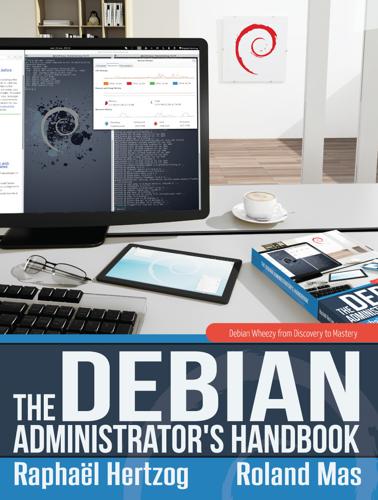
The Debian Administrator's Handbook, Debian Wheezy From Discovery to Mastery
by
Raphaal Hertzog
and
Roland Mas
Published 24 Dec 2013
op=log Vcs-Svn: svn://svn.debian.org/collab-maint/deb-maint/zim/trunk Build-Depends: debhelper (>= 7.4.12), python-support (>= 0.8), xdg-utils, python (>= 2.5), libgtk2.0-0 (>= 2.6), python-gtk2, python-xdg, python-simplejson | python (>= 2.6) Checksums-Sha1: bd84fa5104de5ed85a49723d26b350856de93217 966899 zim_0.48.orig.tar.gz 352111ff372a20579664416c9abd4970839835b3 9615 zim_0.48-1.debian.tar.gz Checksums-Sha256: 77d8df7dc89b233fdc3aab1a8ad959c6888881ae160770f50bf880a56e02f895 966899 zim_0.48.orig.tar.gz 0fceab5d3b099075cd38c225fa4002d893c1cdf4bbcc51d1391a34248e1e1a22 9615 zim_0.48-1.debian.tar.gz Files: 88cfc18c0c7339528d5f5f463647bb5f 966899 zim_0.48.orig.tar.gz 608b6e74aa14252dfc6236ab184bdb0c 9615 zim_0.48-1.debian.tar.gz -----BEGIN PGP SIGNATURE----- Version: GnuPG v1.4.10 (GNU/Linux) Comment: Signed by Raphael Hertzog iQEcBAEBCAAGBQJMSUAfAAoJEAOIHavrwpq5qjUIAKmM8p86GcHYTxMmKENoBUoW UPi5R7DzrLMbFrUXKgXWLvEKQTXpmkJhh2aSWq2iY+5piBSHwMiITfaBTpdTRvzU 5nT/n9MlF8sJFESet/NgZaMPFDzWUbIy5aYbuG1TXmn/7XiDrBaQGiVqKkVLPrqc yWhsotn3JNKIjbPDW/DjImYyKD5RZpXrbVjuIgDT1E6yxtNYwUyBlK0cx/GITNep uV48hsT8cj0paqVXl5+P9Ww8XIE3clxNpE/45/tvKvkqGOeysc6OPAqsIw6HYFY9 0EnvMTfMpeQOA68ZqsNpUjomv5r/EGwdCbAWo5iJDsZzXQ1Feh6iSNrjv3yeRzg= =qnbh -----END PGP SIGNATURE----- Note that the source package also has dependencies (Build-Depends) completely distinct from those of binary packages, since they indicate tools required to compile the software in question and construct its binary package.
…
The .dsc (Debian Source Control) file is a short text file containing an RFC 2822 header (just like the control file studied in Section 5.2.1, “Description: the control File”) which describes the source package and indicates which other files are part thereof. It is signed by its maintainer, which guarantees authenticity. See Section 6.5, “Checking Package Authenticity” for further details on this subject. Example 5.1. A .dsc file -----BEGIN PGP SIGNED MESSAGE----- Hash: SHA256 Format: 3.0 (quilt) Source: zim Binary: zim Architecture: all Version: 0.48-1 Maintainer: Emfox Zhou <emfox@debian.org> Uploaders: Raphaël Hertzog <hertzog@debian.org> Homepage: http://zim-wiki.org Standards-Version: 3.9.0 Vcs-Browser: http://svn.debian.org/wsvn/collab-maint/deb-maint/zim/trunk?
…
/usr/share/ drwxr-xr-x root/root 0 2013-01-02 19:28 ./usr/share/doc/ drwxr-xr-x root/root 0 2013-01-02 19:28 ./usr/share/doc/gnupg/ -rw-r--r-- root/root 3258 2012-01-20 10:51 ./usr/share/doc/gnupg/TODO -rw-r--r-- root/root 308 2011-12-02 18:34 ./usr/share/doc/gnupg/FAQ -rw-r--r-- root/root 3543 2012-02-20 18:41 ./usr/share/doc/gnupg/Upgrading_From_PGP.txt -rw-r--r-- root/root 690 2012-02-20 18:41 ./usr/share/doc/gnupg/README.Debian -rw-r--r-- root/root 1418 2012-02-20 18:41 ./usr/share/doc/gnupg/TODO.Debian [...] $ dpkg -I /var/cache/apt/archives/gnupg_1.4.12-7_amd64.deb new debian package, version 2.0. size 1952176 bytes: control archive=3312 bytes. 1449 bytes, 30 lines control 4521 bytes, 65 lines md5sums 479 bytes, 13 lines * postinst #!
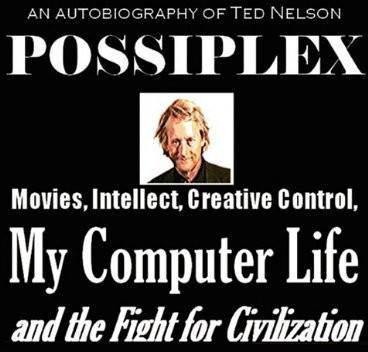
Possiplex
by
Ted Nelson
Published 2 Jan 2010
In fact we sought the deepest possible representation of literature with the greatest power, and I believe we found it. It is only politics and mis-maneuvering that have kept it out of the public’s hands for so long. Worse, the World Wide Web has taken all the oxygen, obscuring our much deeper agenda. What would Phil Zimmermann have said? (2010.01.30) Phil Zimmermann, creator of PGP encryption, was inspired early by the Xanadu concepts. He emails: "How will future historians keep track of all this?” he asks. “It's so unstable. There is so much about Xanadu that is better than the web today." XANADU HISTORY IN BRIEF The Xanadu group sought to build a world-wide hypertext publishing system of a scope inconceivable in today’s terms.
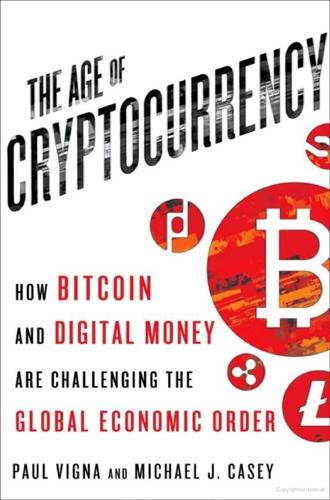
The Age of Cryptocurrency: How Bitcoin and Digital Money Are Challenging the Global Economic Order
by
Paul Vigna
and
Michael J. Casey
Published 27 Jan 2015
Nakamoto’s masterpiece would come to nothing unless others used it. It had to start somewhere. Nakamoto had been bitcoin’s first adopter. Now, he needed a second. Thankfully for him—and for bitcoin—somebody raised his hand. Hal Finney, then fifty-three, was a top developer at PGP Corp., a company founded by Phil Zimmermann, a legendary crypto-activist whose ironically named Pretty Good Privacy software helped popularize public-key encryption systems for e-mail. An early and prominent member of the Cypherpunk movement, Finney is credited with various cryptographic innovations himself, including anonymous remailers, which allow people to send e-mail without revealing its origins.
…
nextcoin Nixon, Richard nonces Odom, Chris oil Oksman, Vladimir Olsen, Richard open-source projects Open Transactions Operation Choke Point Osborne, George Overstock Owyang, Jeremiah Oxman, Jason P2P Foundation Packard, Bob Pakistan Palmer, Jackson Pantera Capital Papa John’s pizza Passion Capital payments industry PayPal PayStand peercoin PeerPal peer-to-peer transactions Penenberg, Adam Perón, Juan Domingo Peru peso Peterson, Paige Pew Research Center PGP Corp. philanthropy Philippines Philo Pierce, Brock Piper pizza Plug and Play Tech Center Polis, Jared political donations Ponzi schemes Portugal poverty Powell, Jesse Prasad, Eswar Pretty Good Privacy printing press privacy private key proof of burn proof of stake proof of work property rights ProtonMail public key Purse QuickCoin Quigley, William Rabois, Keith Radar Capital Radtke, Autumn Raspberry Pi Ratha, Dilip Reagan, Ronald Realcoin Reddit Reed, John regulation regulatory arbitrage remittance business Renaissance revolutions Ripple Rivest, Ron Robbins, Scott Robinson, Scott Rolling Stone Roman Empire Rosen, Sholom Rossiello, Elizabeth Roszak, Matthew Roubini, Nouriel RSA Rulli, Francesco Russia Sacramento Kings Safaricom Saggers, Laura Salomon Smith Barney Salt Lake City San Francisco, Calif. 20Mission in SAP satellites SatoshiDice Schechter, Joshua Schmidt, Eric Schopenhauer, Arthur Schumer, Chuck Sclavos, Stratton scrypt Sean’s Outpost SecondMarket Secure Electronic Transactions (SET) Securities and Exchange Commission (SEC) securities contracts seigniorage Selkis, Ryan Serrano, Sebastian sharing economy Shasky Calvery, Jennifer Shavers, Trendon Shiller, Robert Shrem, Charlie Silbert, Barry Silent Circle Silicon Valley accelerator programs Silicon Valley Silk Road Simpson, David Singapore Sirer, Emin Gün Skype smart contracts smartphones smart property Smith, Adam Smith, Peter Snowden, Edward societal changes Softcard Spain spam bitcoin and Square stagflation Stanford, Leland Starbucks Starfish and the Spider, The: The Unstoppable Power of Leaderless Organizations (Brafman and Beckstrom) staters Stein, Josh Stellar Stockholm Stockman, Steve Strauss, Levi StrictlyVC Stripe Summers, Larry Sutter, John Sutter’s Mill Swarm Sweden Switzerland Szabo, Nick Taaki, Amir Tally Capital Target taxes capital-gains regulatory arbitrage and taxi services technology(ies) bitcoin as disruptive Tel Aviv Tencent Holdings Terpin, Michael TerraMiner terrorism Tesla Texas 37Coins Thornburg, Jonathan Time Times (London) T-Mobile Toronto trade Tradehill Tradenet transaction fees bitcoin and Travelers Group Treasury Department, U.S.

Fix Your Gut: The Definitive Guide to Digestive Disorders
by
John Brisson
Published 12 Apr 2014
Pharmazie. 2004;59(3):194-7. http://www.ncbi.nlm.nih.gov/pubmed/15074591 Atal N, Bedi KL. Bioenhancers: Revolutionary concept to market. J Ayurveda Integr Med. 2010;1(2):96-9. http://www.ncbi.nlm.nih.gov/pmc/articles/PMC3151395/ Li S, Lei Y, Jia Y, Li N, Wink M, Ma Y. Piperine, a piperidine alkaloid from Piper nigrum re-sensitizes P-gp, MRP1 and BCRP dependent multidrug resistant cancer cells. Phytomedicine. 2011;19(1):83-7. http://www.ncbi.nlm.nih.gov/pubmed/21802927 Ferreira C, Soares DC, Barreto-junior CB, et al. Leishmanicidal effects of piperine, its derivatives, and analogues on Leishmania amazonensis. Phytochemistry. 2011;72(17):2155-64. http://www.ncbi.nlm.nih.gov/pubmed/21885074 Singh TU, Kumar D, Tandan SK.
…
Candida General Information http://emedicine.medscape.com/article/781215-clinical, Accessed April 28, 2014. http://onlinelibrary.wiley.com/doi/10.1002/cbf.1533/pdf, Accessed April 28, 2014 http://www.marksdailyapple.com/candida/#axzz2gFRgEAgw, Accessed April 28, 2014 http://www.medicinenet.com/white_tongue/symptoms.htm, Accessed April 28, 2014 http://www.drlwilson.com/articles/candida.htm, Accessed April 28, 2014 http://www.healingnaturallybybee.com/articles/heal2.php, Accessed April 28, 2014 Bernhardt H, Wellmer A, Zimmermann K, Knoke M. Growth of Candida albicans in normal and altered faecal flora in the model of continuous flow culture. Mycoses. 1995;38(7-8):265-70. http://www.ncbi.nlm.nih.gov/pubmed/8559187 Cat TB, Charash W, Hebert J, et al. Potential influence of antisecretory therapy on the development of Candida-associated intraabdominal infection.
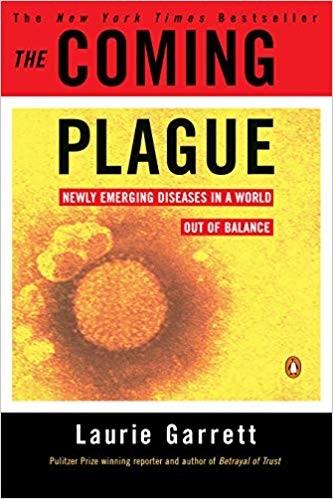
The Coming Plague: Newly Emerging Diseases in a World Out of Balance
by
Laurie Garrett
Published 31 Oct 1994
Most of these powerful defense weapons had probably existed in microbes, and in individual animal or plant cells, for aeons. They performed services for the organisms that extended well beyond resisting antibiotics or attaining greater powers of infectiousness and lethality. For example, species as diverse as yeast, human cancer cells, and malaria parasites all could process a similar set of genes—designated mdr or pgp—that provided the blueprints for membrane pumps. The yeast used the acquired ability to pump out pheromones (or external hormones) that attracted one yeast to another. Human cancer cells used the genes to expel chemotherapy drugs. Plasmodium falciparum used the genetic traits to get rid of chloroquine.97 Plasmids played a role in the evolution not only of bacteria but possibly of all species on the planet.
…
As AIDS panic in Bavaria increased, and public support for the arrests was loud and clear, Bavaria’s Interior Minister, August Lang, announced that all prostitutes, civil service job applicants, drug addicts, immigrants, prisoners, and foreigners applying for extended residency permits would be required to undergo HIV blood tests. Days later the Bavarian city of Munich announced plans to dismiss all HIV-positive civil servants. The Bavarian actions received a surprising amount of support from German residents of other, typically more liberal states. Federal Interior Minister Friedrich Zimmermann was prompted to order the nation’s border patrol to deny entry to all foreigners who carried the AIDS virus.10 The European Community was outraged. Officials denounced the German actions as clear violations of Community principles of freedom of movement on the continent. In November 1987 the president of the German Federal Court of Justice, Gerd Pfeiffer, announced that in the absence of an HIV vaccine it might soon prove necessary to tattoo and quarantine people who were infected with the virus.
…
(CA; NJ; NY) Additional jurisdictions introducing legislation between 1984 and 1987: Angola (1987), Australia (1984), Barbados (1985), Belgium (1985), Belize (1987), Benin (1987),* Bermuda (1985), Brazil (1985), Brunei Darussalam (1987), Bulgaria (1985), Burundi (1987), Canada (1985), Chile (1984), China (1987), Costa Rica (1985), Cuba (1986), Cyprus (Sovereign Base Areas) (1987), Czech and Slovak Federal Republic (1984), Denmark (1985), Dominican Republic (1987), Ecuador (1985), Egypt (1986), Finland (1985), [German Democratic Republic (1986)], Grenada (1986), Guatemala (1986), Haiti (1987), Honduras (1987), Hungary (1985), Iceland (1986), India (Goa) (1987), Indonesia (1987), Iraq (1987), Jordan (1987), Kenya (1987), Libyan Arab Jamahiriya (1987), Liechtenstein (1987), Luxembourg (1984), Malaysia (1985), Malta (1986), Mauritius (1987), Mexico (1985), Monaco (1986), Mozambique (1986), Netherlands (1987), Niger (1987), Panama (1985), Paraguay (1985), Peru (1987), Philippines (1986), Poland (1986), Portugal (1986), Republic of Korea (1987), Romania (1985),* Russian Federation (1985), Rwanda (1987), Singapore (1985), South Africa (1987), Spain (1985), Switzerland (1986), Syrian Arab Republic (1987), Thailand (1985), Togo (1987), United Kingdom (1984), Uruguay (1984), Venezuela (1984), Yugoslavia (1986) Additional jurisdictions introducing legislation between 1988 and 1992: Albania (1992), Algeria (1989), Argentina (1988), Bahrain (1990), Bolivia (1988), China (Province of Taiwan) (1988),* Colombia (1988), Comoros (1988), El Salvador (1988), Equatorial Guinea (1988), Estonia (1992), Gabon (1989), Guinea-Bissau (1989), Hong Kong (1988), Japan (1988), Lebanon (1990), Madagascar (1990), Mongolia (1989), Oman (1990), Saint Lucia (1991), Saudi Arabia (1990), Senegal (1990), Tunisia (1989), Ukraine (1991),* Vietnam (1989) Date of legislation unknown: Bahamas,* Cyprus,* United Republic of Tanzania* *Text unavailable to WHO. See chart on facing page. 9 For a flavor of the period, see Panos Dossier, The Third Epidemic: Repercussions of the Fear of AIDS (London: Panos Institute and Norwegian Red Cross, 1990). 10 In addition, Zimmermann revealed that the names of HIV-positive German residents had been forwarded to police authorities, who were closely watching the individuals. 11 These and other details are compiled from a large variety of news, medical, and interview sources. Citing these points would so severely increase the size of this book that I must request the readers’ forgiveness and refer, in addition to the previously cited Panos Dossier, to back issues of two invaluable publications: CDC AIDS Weekly, P.O.